#it is truly the best piece of gay cinema to come out in the past decade
Explore tagged Tumblr posts
Text
to the girls, gays, and theys: please watch episode 3 of the last of us
#begging you#even if you're not into zombies#it is truly the best piece of gay cinema to come out in the past decade#casey talks#the last of us#tloa#i will be thinking about them for the rest of my life
39 notes
·
View notes
Text
'We knew from the moment we first saw All Of Us Strangers all the way back in January that Andrew Haigh's film, a haunting queer romance centred around Andrew Scott's isolated writer Adam and the connection he makes with Paul Mescal's sad-eyed drifter Harry, was special. Is it a ghost story? A fever dream? A tangible construct formed of a grieving man's subconscious? We didn't — and still don't truly — know, but by God we felt every exquisite moment of its magnetising melancholy, its smouldering sensuality. So much so that when we came to write Empire's 'Best Movies Of 2024 (So Far)' list in June, Haigh's movie sat comfortably in podium place on the list. And now, a full twelve months since the movie first released stateside, All Of Us Strangers has taken root even deeper in our hearts — and soared right to the top of our Best Movies Of 2024 list.
“This is so cool," says director Haigh when Empire shares the news that his latest has just been voted our film of the year, "I’ve read Empire literally since it first came out." And for the Harrogate born filmmaker, whose past works include the likes of Looking, 45 Years, Lean On__Pete, and Weekend, the recognition still being given to his sixth feature offers an opportunity for reflection. "The idea that I could ever be even involved in film, let alone be a director, was so out of my imagination, so it’s very cool to now be here. I appreciate it," says Haigh. "When I made the film, I was never sure if it would find an audience. So it’s been the biggest joy that it has found that audience, and continually finds that audience. The fact that people still even talk about it a year later is really meaningful. It really seems to have resonated. You can’t ask for any more than that. It’s pretty exciting that it’s number one after all this time.
One of the things that has really All Of Us Strangers stand out among its peers in what has been another exceptional year for cinema is just how intensely personal its story of love, loss, and soul-deep longing truly is. Even now, Haigh finds himself wrestling with just how much of himself he poured into this one. “I’m not a particularly extroverted person, and the fact that there is now this kind of personal story about me out there, I’ve found that a little bit hard," Haigh admits. "It’s taken me, actually, a little bit of time to deal with that. Even the fact that I shot it in my [old] house."
But if putting his heart on the line for his art was a huge and, at least for a time, difficult step for Haigh, then it was also one that ultimately felt worth taking. "The want of most filmmakers is to be able to say something about how they see and understand the world, and allow that out into the world, to resonate with other people," the director explains. "So it is really quite a powerful thing, when you are sharing your own personal philosophy of life, and something based on some element of personal experience, and then have that speak to other people. And I can’t tell you how many people have come to me to tell me their own stories, whether it’s about losing a parent, or whether it’s about growing up gay, or whether it’s just about feeling alone in the world. That feels special."
Reflecting on the outpouring of pure emotion All Of Us Strangers has been met with now, almost a full year since it was released into the world, Haigh is as philosophical, poetic, and honest as his work. “If a piece of art can make you feel less alone, even if it’s desperately sad and melancholy, if it allows you to feel like, ‘Oh my God, I am not the only one that suffers in the world’ — that’s a very powerful thing," he shares. "Because we often don’t express how we feel, even to those who are closest to us. And art can tap into that shared loneliness that we all experience in the world. It’s also quite unusual sometimes: I’ve been in places and someone will start talking about the film and they’ll start crying. That’s quite a powerful thing to have to experience. Sometimes you don’t know what to do. You’re sort of, ‘Okay...’ Pat them on the shoulder. ‘I’m sorry for you...’ I literally could not have asked for more for this film. It’s more than I ever dreamed.” That's the power of love, right there, people. And the power of All Of Us Strangers, Empire's film of the year. *Dissolves into the cosmos as Frankie Goes To Hollywood plays us out*'
#All of Us Strangers#Andrew Haigh#Andrew Scott#Paul Mescal#Frankie Goes to Hollywood#Film of the Year#Empire
1 note
·
View note
Text
‘Black Like Me?: A Tale of a Black Indie Author’
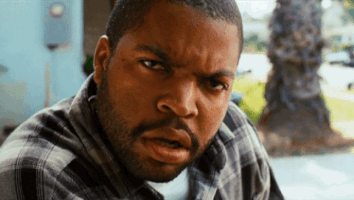
It had come up so many times before.
I had this idea.
He would be a gay black man. He would probably be a writer. And I wanted to see what would happen when he decided to do a social experiment: an interracial relationship. How his friends would react to it. How people would react to it. How he would truly feel about that. How did the other half lives?
And that…was back when I was in college. And that was a looooooonnnnnnng time ago.
But yet it kept coming up. And I fiddled with it over the years. It was a short story here. It was a teleplay there. It became my NaNoWrIMo (National Novel Writing Month) project at one point. The idea had stuck with me in one form or another.
I guess I shouldn’t be surprised. I used to write a column for gay and lesbian youth in college. I wrote about what it was like to be a gay black man trying to find his way. A gay black man that was open to the idea of interracial relationship…was an urban shoe myth when I was in college. Laughable even.
Now…?

Thoughts of a Lost Friend
For me…I think it started with my Friend Moore.
Moore was my close friend I lost this year. It happened at the start of it. In January. However, I didn’t discover this until March as the Coronavirus forced a lockdown. Due to surviving, I really had not given myself the time to mourn the loss. For someone who was so close to me, I knew that if I allowed myself to feel it…I would shatter. Even being told took a lot out of me.
One of the things that Moore would have liked for me to do was to use my unique perspective to create some interesting stories. Who else other than author E. Lynn Harris (who was also from Arkansas) could own the perspective that I had? Gay AND black. DOUBLE minority.
But…was that something I was comfortable with?
Well…no.
When one was used to being told they were nothing, eventually one started to believe it. I was no different. So in college, just the idea of having a column to express myself was a new thing.
The adventures of a first date. Talking about what it was like to come out. Dealing with conservative opinions over something as simple as dyeing my hair fire engine red. And of course, writing. I had done it all.
Then…I took a year off.
From school. From writing really. I also moved. From there, it was like a domino effect of circumstances. Before I knew it, writing had gotten away from me.
Into this life…Moore appeared. When I needed advice, he was there. No nonsense with a dirty sense of humor. And no matter what I was doing, he was always pushing me to write. Do what I wanted to do. And when I moved back to San Diego in 2013 and started to embrace my label as an indie writer, he was always mentioning opportunities where he felt I could be writing. He continued to say as a black writer, I had a unique perspective. One that people did not get to hear.
But…did I? I had written several books. Darkened Soul. Darkchilde. Darkened Soul: Jonathan’s Tale. Darkened Soul: Pieces of a Darkened Puzzle. I had done several novels now. I had mixed genres before it was cool, too. Dystopian with Nosferatu. Horror with futuristic witches. A historical fiction that span time into the 90s…and beyond.
I realized something.

I could count on my fingers how many POC (People of Color) I had in my books. There was Mary from Darkened Soul: Jonathan’s Tale, a witch in pre-Civil War Virginia and Jonathan’s henchwoman. There was Jonathan’s servant from that book. Isis in Darkchilde. Main Character Aidan’s best friend Mick. The Nosferatu warrior Osiris in Darkened Soul.
Hm.
For a black writer…I sure don’t have a lot of black characters.
What did that say about me?

So You Say You Have No Voice?
I never found it.
For those who keep up with my blogs, I was talking about my flash drive. To refresh, I had a flash drive with a lot of things on them. And one day, I thought I had misplaced it. I had torn my room apart trying to find it. But…no dice. I could only assume that I lost it after searching multiple times AND moving rooms.
Worse…I had not backed up a lot of my writer stuff.
Boo. I knew better. I sooo knew better. I thought…well…woulda, shoulda, coulda.
And then…

It started by me going through my Yahoo account.
I was looking for an old short story. THE AUTHORS’ TABLE was going to be releasing an anthology. The anthology, titled Shattered Illusions, centered around a theme: mirrors. And I knew that I had done a short story titled “Voices” that had to do with mirrors. I think. I was not sure since I had not touched it in years. So there I was under my Yahoo account looking for it.
Wow.
It had been a long while since I had been through the Drafts section of my Yahoo account. Back in the days when there was very little internet or clouds. Back when I backed up everything often. It was like seeing my writing life flash before my eyes. It reminded me of Phase Two.
Phase Two. I had mentioned it several times over the last year. Per some advice I read in an article, I actively started to self-publish in 2013. And it’s been fun for the most part. But it was time for the next step. While I planned to keep self-publishing because there were some projects I wanted to keep to myself, I wanted to traditional publish as well. Thus, Phase Two. Of course, I had books ready for that phase, complete with submission packages for potential agents.
And I shouldn’t have worried.

I’ve mentioned my books before here and at my Author page at www.facebook.com/writerguygothic. One was the quirky gay novel PICTURES OF A JADED BITCH. The other was my college town with secrets horror novel HE AWAITS… What surprised me about them was I saw diversity in them.
PICTURES OF A JADED BITCH had a black character as the co-main character. How could Patrick (the other main character) have mischief without his partner in crime Ryan. Heck, there was even a scene where Ryan was dressed up as CRUEL INTENTIONS Kathryn for Halloween. A black villain…who would have thought? Lol. But Ryan allowed me to dive into some of what it was like to be a gay black man in the South and how it was (back then) to be black in the gay community.
HE AWAITS had a lot of things to touch up. I went in colorblind (or as I called it then the Shonda Rhimes technique) in my writing and it showed. One of my main characters was upper class black girl with a secret. Then there was the black detective assigned to figure out who was behind the killings…and dealing with his past and the death of his wife. There was his sidekick, the Latina examiner. They of course had sparring down pat. There was even a drag queen running around, trying to steal scenes.
Again, I needn’t had worried about if I was writing more diversity in my works. It looked like I was doing just that. Clearly I wanted to see more of myself out there. Worrying about having a voice. Hm. Seem like it was there. Clearly I knew what I wanted to say deep down.
Now…what to say? How to say it?
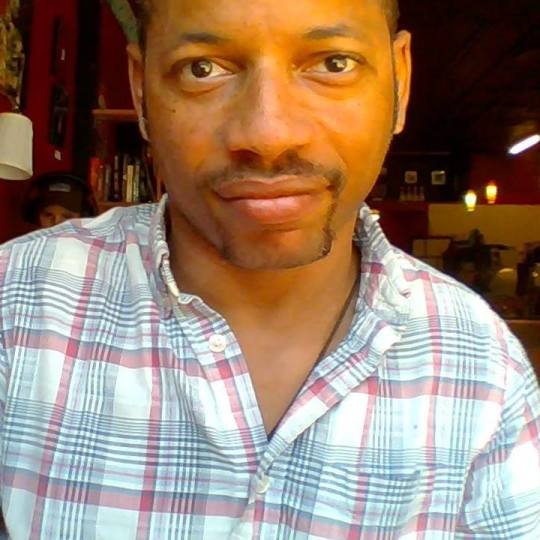
Turning
It was November again.
That of course meant that it was NaNoWriMo again.
Over the last few months, I’ve been writing short stories for various things and submitting them. It turned out “Voices” was not the right fit for Shattered Illusions. So I wrote a new short story. Titled “Kitsune-Tsuki Images”, it was a step in the new direction that I felt that my writing would be going next. Still a bit of a mixed genre of course.

But with it done, I knew that I would need a challenge. And what was more challenging than working on a new novel?
There was another NaNoWriMo project that fell by the wayside a few years back. It was about the restaurant industry. After reading SWEETBITTER by Stephanie Danler it had been on my mind again. So I decided to make it my NaNoWriMo project this year. And it was coming along nicely. I was curious to see how diversity would be reflected now.
Speaking of that…it had resurfaced.
Again.
That novel about the gay black writer who wanted to do a social experiment through interracial dating. This time he was a blogger though. A few of the names had been changed. But the general idea was still the same.
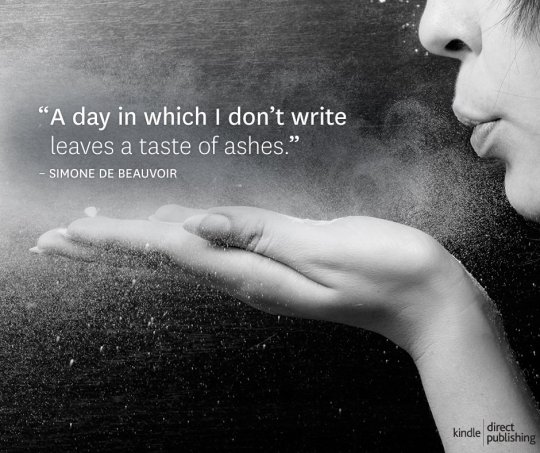
I used to tell other people that when an idea continued to pop up or when a character randomly appeared when you are writing, it was usually a sign. A sign that it was a story that wanted to be told. And until it was told, that idea or character would continue to appear. Usually at times when you were not expecting them.
It appeared that it was coming along at just the right time. During Lockdown, I kept seeing articles pop up. A documentary was released about black horror cinema. Next year a lot of books about black main characters was coming out. Even reality tv shows I watched (yes, I watch) were going to try to diversify their cast. I guess…I was ahead of the curve. I mean…I was writing dystopia before it was ‘cool.’
Still…I was nervous. However, it was nice to have a sign from the Universe that perhaps it was time. Time to let that part of my voice be heard.
I thought of Moore. He had always had faith in me. He knew I had this voice and how much it needed to be heard. That maybe the world would like what I wanted to say. I just wished that he was here to see it.
But…knowing him he was looking down and seeing how I was growing over this year. And he was probably smiling. He would probably also say I should go flirt or get laid. :D :D
But…Faith. He had in me. And I needed to have it in myself. So…Phase Two called.
And my fingers…listened…finally…
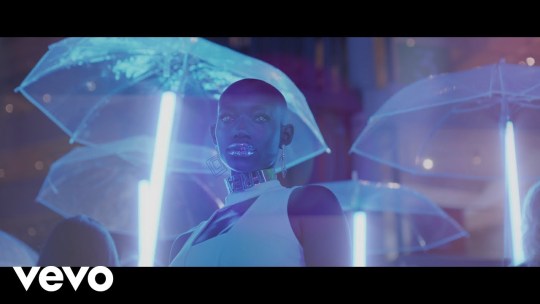
#black #africanamerican #authors #indie #writing #indieauthor #coronavirus #us #interracialrelationship #socialexperiment #fiction #phasetwo #theauthorstable #shatterillusions #diversity #pandemic #glbtq #urbanshoemyth #elynnharris #minorities #cruelintentions #shondarhimes #nanowrimo #sweetbitter #stephaniedanler
#black#africanamericanfiction#authors#indie#writing#indieauthor#coronavirus#us#interracial relationship#socialexperiment#fiction#phasetwo#theauthorstable#shatteredillusions#diversity#pandemic#glbt#urbanshoemyth#elynnharris#minorities#cruel intentions#shonda rhimes#nanowrimo#sweetbitter#stephaniedanler
1 note
·
View note
Text
HIStory3: Trapped: Review (& General Info)
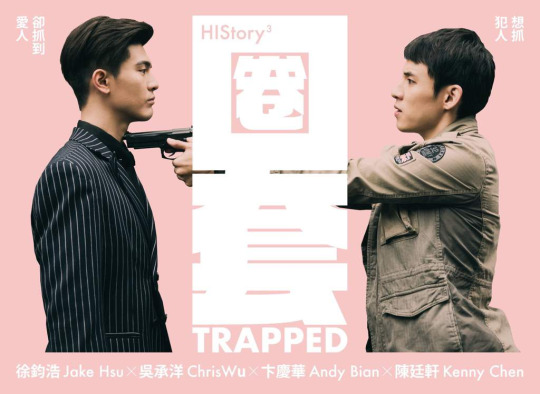

About the Series:
Summary: A police officer and a gang leader were killed in a gunshot attack four years ago. What's the secret behind this case? The only survivor, Tang Yi, is now the gang leader. Shao Fei is a police officer, who’s been following Tang Yi around for the past four years, trying to figure out what’s really happened during the attack. Will he be able to get to the bottom of the case? And can something unexpected come out of their rivalry? (Trailer)
Couples: Main gay couple, as well as two side couples - one gay, one straight.
Running Time: 10 episodes - around 45 minutes each - 8 hours in total
Cast (& their Instagram pages): Jake Hsu (Shao Fei), Chris Wu (Tang Yi), Andy Bian (Jack), Kenny Chen (Zhao Zi), Diane Lin (Hong Ye), Sphinx Ding (Dao Yi), Zhang Guang Chen (Andy), Stanley Mei (Li Zhi De), [more].
Where to watch? VIKI (if you watch on mobile, you’ll have to download the app).
Related Shows: HIStory is a recurring Taiwanese BL series, however, each season is separate from the others and none of them are connected in any way, so there’s no other Trapped content out there.
My Review:
Rating: 9.5/10
Short review: Trapped is my favorite BL of all time. It has a good plot, fantastic acting, the most wonderful couple ever (whose intimacy is handled incredibly well), amazing characters, awesome friendships and a whole list of other great things. Despite having one controversial character, a slightly questionable background couple and a not-so-satisfying (though still not bad) ending, I don’t think there’s anything that could stop you from enjoying it. And though, as usual, it’s obviously your own decision to make, it’s definitely a must-watch in my book.
Extended review (under the cut):
I consider Trapped the best BL that exists to date – without a shadow of a doubt. Not everyone agrees with me and that’s entirely understandable, however, I assure you that even though someone might prefer one or a couple of other BLs to this one, everyone considers Trapped one of the best ones for sure.
The plot of Trapped is thought-out and actually good. It obviously isn’t a masterpiece of modern cinema, however, unlike so many other BLs, the plot actually matters. It’s interesting, gripping, well-thought-out, with a nice mystery and some unexpected reveals that might actually surprise you. Everything gang-related isn’t just there for show – it’s done tastefully and doesn’t seem cheap at all, you truly believe it. So many moments are hilarious, especially in the beginning. And the show is very meticulous and careful with all its little details, so there are no annoying minor plot or aesthetic inconsistencies that could take you out of immersing into it. The pacing of the plot is a tiny bit slow in the first couple of episodes, but it needs that to build itself up properly, and it quickly picks up as soon as it can.
The characters in this show are amazing. You will not only fall in love with the mains, but also adore most of the background characters and hate the rest of them, which just goes to show how much each of them can impact you emotionally because they’re that fucking great. All the details about the characters are well thought-out and awesome too. Tang Yi is not just a gang leader in name – Chris, the actor who plays him, does a fantastic job of showing just how intimidating Tang Yi can be and generally convinces us of him being the Big-Bad-Gang-Boss through so many brilliant subtle acting choices. The villain is actually threatening and terrifying too. Shao Fei can be rather embarrassing and cringy, however, Trapped certainly manages to show that this is truly just his personality, and they’re not just doing this for laughs. Besides, I’ve heard many people who usually get second-hand embarrassment all the time say they didn’t feel awkward for Shao Fei at all – he isn’t embarrassed since this is his true, authentic self, so no one else is embarrassed for him either. Finally, two background queer characters are fantastic. Usually, in other BLs background queer characters, who aren’t there for a romantic plotline, are never anything beyond a stereotype and are always there for laughs. That’s not the case in Trapped. Both of the characters are absolutely incredible, authentic and beautiful – most certainly one of the best background characters I’ve seen in any BLs.
I must note that one character definitely caused some controversy in the fandom, and I can’t say much else beyond this without giving you a gigantic spoiler. However, even though I do think they could’ve handled the topic better overall, I don’t find there’s anything wrong with having one of the many queer characters in the show be a bad person. I’ve talked about it many times and, considering the fact that we still have at least six positively-portrayed queer characters, the seventh being a piece of shit does not affect the representation in any way and doesn’t suddenly give all queer people a bad name. There are shitheads among us too, you know. And it’s important to talk about it.
Moving on, let’s talk about relationships. For starters, the main couple is hands down the best enemies-to-friends-to-lovers you’ll ever see – that I personally guarantee. Their romance is developed well and treated with the care it deserves, and they end up being the most adorable, wholesome couple ever. I also want to especially point out how well Trapped handles their intimacy. A lot of other BLs have their couple treat each other like friends half the time, be dating another half and kissing/having sex on rare occasions. In reality, though, a couple is always intimate with each other. And I don’t mean that everyone fucks like bunnies – no. I mean couples have intimate conversations, hold hands, kiss each other in a million different ways (and on a million different spots), cuddle for no reason, hug, express emotions and, of course, sometimes have sex. Not every couple does absolutely everything I’ve just listed, of course, but you get the overall point. Couples are intimate. And Trapped gets that. It shows that. And that’s wonderful. As for others, the straight background couple takes up just enough screen time to not annoy you and it’s actually kind of cute, which is super rare for me to say. Now, the gay background couple is rather questionable. One of the guys is kind of oblivious and juvenile, while the other pushes him too hard. It’s not so critical that I’d tell you to skip their moments, however, it is definitely food for thought and I’d say pretty problematic.
The friendships in Trapped are sort of a double-edged sword. On one hand, we have Shao Fei and Zhao Zi, who were proclaimed to be best friends, but don’t end up having any meaningful moments together and are really out of the loop with each other’s lives by the end of the show. This can be explained and justified, but I still feel like it’s a little unrealistic. On the other hand, though, we have Tang Yi and his friends – mainly, Andy, The Doctor (whose name I, apologies, don’t remember), as well as Hong Ye and Tang Guo Dong. Despite only seeing a couple of moments with each of them, we get attached to every character and their relationships with Tang Yi very easily. His friendships with Andy and The Doctor are familiar and realistic. His relationship with Hong Ye is deep and authentic – you can truly see they are like siblings to each other. And his relationship with Tang Guo Dong is so beautiful and raw that you end up falling in love with the “found father” trope and wish you had the same relationship with your parents or any mentor figure, really. Despite Tang Yi and Tang Guo Dong only having four small scenes with each other – all of which are flashbacks, their dynamic is my second favorite in the show and their relationship is one of the best father/son relationships I’ve ever seen.
Finally, the show is shot beautifully and the acting in it is on a completely different level. Seriously, you will say, “Holy shit, this actor is so good!” like every other second. I literally grabbed my pen to write some version of “the acting is so good” in my notes, while rewatching the show for this review at least twenty times, and the only thing that stopped me is already having it written down thrice.
The very last note I have is about the ending. Now I will say immediately that this show does not have a bad ending – I could not have it as one of my favorites, if it did, I’m strictly a happy-ending kind of person. However, the ending is still a little too vague for my taste and I wouldn’t say I’m satisfied with it. It’s not the end of the world and overall it’s an alright ending you can live with – nothing bad happens. However, I wouldn’t call it the best ending this show could have – and that’s all I can say without giving any spoilers.
Finally-finally, should you watch this show? Fuck yes! Absolutely, my guy! Have you heard all I’ve just said? It’s brilliant. An absolute fucking masterpiece, I’m telling you. So yes, I recommend it to literally everyone. There is legitimately no other series I want to show everyone as much as this one – this is fucking mandatory in my book. Regardless of however I feel about it though, at the end of the day, it’s obviously your own decision to make.
26 notes
·
View notes
Text
Best of 2018
I watch a lot of films.
For close to five years now, I’ve been watching somewhere in the region of 100-150 new releases per year. At some point along the line, I started to keep lists of those films, then started to rank the movies on those lists, and eventually got into the habit of compiling end of year lists.
I shared these lists (and discussed them at great length in podcast form) in 2016 and 2017, and I wanted to do the same for 2018. With the Leftover Popcorn Podcast currently on an extended hiatus, that brought me to the post you’re reading right now.
Due to the quirks of global release schedules, the timing of these posts is always a little tricky. I’ve made a habit of finalising my lists just before the Oscars on an annual basis, as that generally affords the extra time required for many of the year’s most interesting films to make their way to me in Ireland.
As such, this list is comprised of my 20 favourite films that received either (a) a U.S. release in the Academy’s eligibility window for the 91st Academy Awards or (b) extremely belated releases in the UK and Ireland following late 2017 releases stateside.
Only time will reveal if 2018 was a particularly strong or interesting year for film, but I know it at least offered plenty of films that have stuck with me long after the end credits finished rolling. The year was filled with ideas, moments, shots, set-pieces and technical achievements that amazed and resonated with me in a wide variety of ways. Many of those highlights can be found in the 20 films below.
Before getting to the list, I have some honourable mentions. In no particular order, they include: Wildlife, The Favourite, Crazy Rich Asians, Hereditary, A Quiet Place, Three Identical Strangers, Beast, Shirkers, Mission: Impossible - Fallout, The Old Man and the Gun, Won’t You Be My Neighbor?, BlacKkKlansman.
20. A Star is Born - (Bradley Cooper)

The first hour of A Star is Born is as good as anything released this year and, as such, it’s by no means a criticism to say it falls off somewhat beyond that point. Still, Bradley Cooper’s directorial debut contains multiple moments that induce goosebumps. It’s not subtle by any means, but there have been very few films over the past decade that have managed to capture emotional extremes in such a truly cinematic fashion. Lady Gaga is sensational, Sam Elliott is a scene-stealer, and in the form of Cooper’s dog, Charlie*, a star is well and truly born
*In a year of fantastic canine performances, I think Charlie pips out Borras (Roma), Boris (Leave No Trace), Olivia (Widows) and Joy (Dogman) to be the best of the many good dogs.
19. Lean On Pete - (Andrew Haigh)
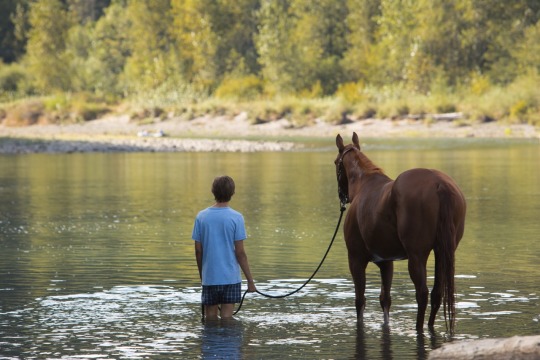
Andrew Haigh’s third feature sees the British filmmaker’s focus shift to the sumptuous expanse of rural middle America. In this touching story of a teenage boy and his attempts to save the eponymous also-ran racehorse, a delicate handle on the narrative complements stunning visuals to produce what should be the contradictory notion of an intimate epic.
It’s impossible not to fall for Charlie Plummer’s protagonist in the same fashion he has grown to love Lean On Pete, as the film’s central relationship reveals both boy and horse have equally been dealt a raw deal by their circumstances.
18. Happy New Year, Colin Burstead - (Ben Wheatley)
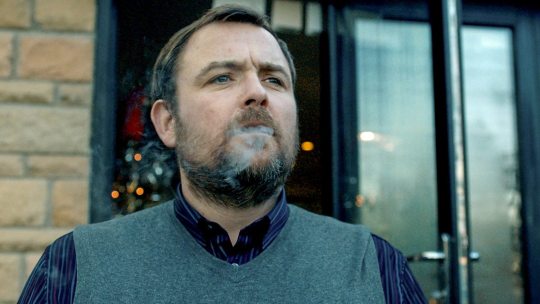
Ben Wheatley has emerged as an incredibly interesting and distinctive filmmaker over the past ten years, and that sense is only further heightened with the contained terror of the family gathering he portrays in Happy New Year, Colin Burstead. As an ensemble piece which takes place on the smallest of scales compared to High Rise and Free Fire, Wheatley’s latest was always going to live and die by its writing and acting.
Unsurprisingly, both are fantastic in a film that provides equal measures of comedy and unbearable discomfort for the audience. As an added bonus, it also includes easily the best end credits sequence of the year.
17. The Rider - (Chloe Zhao)
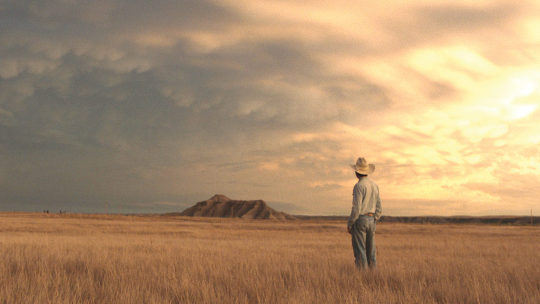
Chloe Zhao’s poetic, contemporary Western packs an abundance of heart-wrenching moments into a film that would stand as an extraordinary achievement even if it wasn’t for its real-life roots. As it is, this is more than just a film.
Although a slightly altered re-telling, the story of the Jandreau family and those who make up their social circle is brought to the screen by the real life figures in question. Zhao uses South Dakota’s largely untouched natural beauty as the canvas for this tale of struggle, and the search for purpose that unfolds from there isn’t easily forgotten.
16. You Were Never Really Here (Lynne Ramsay)
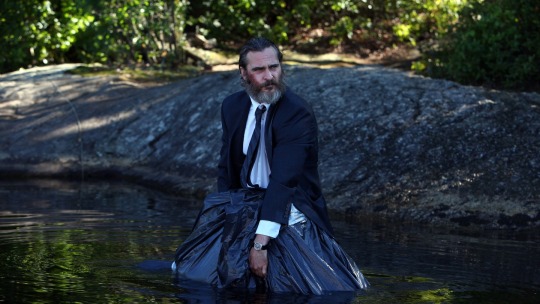
I’d be lying if I said that I liked You Were Never Really Here, which makes it something of a black sheep on a list of films that I otherwise loved across the course of the last 12 months. Some films aren’t supposed to be loved, though, and as Lynne Ramsay’s Taxi Driver-esque fable continues to rattle around my brain all these months later, I’ve come to appreciate it immensely.
This is a deeply unsettling film, but considering the subject matter, that’s exactly what it should be. Ramsay has delivered a film that showcases her masterful control of a very specific mood, and boosted by a stellar performance from Joaquin Phoenix, and Jonny Greenwood’s jolting score, it equated to one of the most memorable movies of the year.
15. Columbus - (Kogonada)
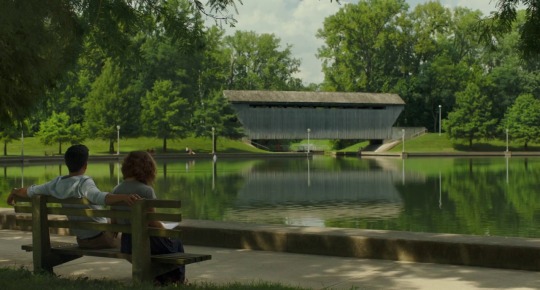
Swathes of cinephiles worldwide were already familiar with Kogonada’s cinematic tastes and sensibilities, thanks to his phenomenal video essays, but that didn’t make his feature directorial debut any less intriguing. In Columbus, Kogonada produced a film as considered as the architecture its characters swoon over.
There’s a stillness and a quiet to the film’s style and story structure, yet that doesn’t equate to a lack of heart or character depth. Haley Lu Richardson and John Cho’s sensational performances anchor the stunning visuals, ensuring their director’s own visual architecture never becomes something prosaic enough to overlook or simply pass by. This is close to as confident and assured as debut films can be.
14. Isle of Dogs - (Wes Anderson)

There’s no getting away from Wes Anderson’s particular tastes, tendencies and flourishes at this point in his career, and as a result, his work remains divisive. Having said that, as Anderson demonstrated in Fantastic Mr. Fox, animation offers an ideal medium for his ever exacting frame and the detail that populates his films. The result in this case is a visually stunning film with a wide range of charms, and something that’s undeniably its own thing in spite of the overt references to Akira Kurosawa and other Asian masters.
Beyond all of its artifice, Isle of Dogs possesses the kind of heart that critics often mourn the absence of in Anderson’s cinema. Anderson’s usual troupe of contributors also provide a fantastic voice cast, with the performances of Brian Cranston, Edward Norton, Bob Balaban, Bill Murray and Jeff Goldblum particularly lively as the film’s leading canines.
13. The Zen Diaries of Garry Shandling - (Judd Apatow)

Documentary portraits of famous figures don’t get much more complete or, indeed, interesting as Judd Apatow’s four-and-a-half hour love letter to the late Garry Shandling. Make no mistake, Apatow’s admiration for and closeness to his subject’s work is clearly evident throughout the film.
In spite of that, the film also manages to offer a look behind the curtain into Shandling’s personal life, and offer up an account of the toll that comedy and television can ultimately take on an individual. The film aligns itself with Shandling’s own clearly reflective instincts, and offers up a measured tribute which gives way to both laughs and tears.
12. The Miseducation of Cameron Post - (Desiree Akhavan)
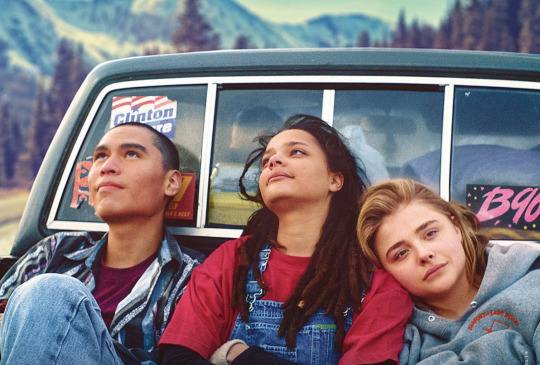
Desiree Akhavan’s second feature offers up a beautifully efficient and affecting exploration of burgeoning sexuality, and the struggles of wider society in coming to terms with that journey of sexual identity. In a year when multiple films took on a similar shape in exploring the archaic notion of gay conversion therapy centres (and on a very different subject but with a frequently similar shape, the restrictive setting of rehab facilities for addicted youth), Akhavan’s film is directed with a grace and subtlety that elevates it far beyond its contemporaries.
Chloe Grace Moretz and Sasha Lane enhance their deserved reputations as young, emerging superstars in a film that’s incredibly well-written, yet avoids the urge to rely solely on lengthy, overacted soliloquies. Instead, this is cinema as it should be. Trusting in the visual nature of the medium, Akhavan’s film is filled with lingering glances and shots, all of which reveal something about the characters and provoke further contemplation on the movie’s ever-important subject matter.
11. Widows - (Steve McQueen)

Steve McQueen’s background as a Turner Prize winning artist translated to a great sense of precision in his first three films. All three of those features, in some form or another, explored what happens when physicality is pushed to its limits, yet in Widows that same theme took on an even grittier quality when married with the conventions of heist films. A move into genre was undeniably a bold step for a filmmaker of McQueen’s style and growing reputation, but then again when he’s capable of playing with generic norms as impressively as he does in this case, it would have been a waste not to explore those possibilities.
Widows stands as a rich text layered with thoughtful assertions on class, race and gender roles, but that doesn’t detract from this story’s potential as pure entertainment either. With one of the casts of the year, the performances are exceptional across the board -- although Daniel Kaluuya’s work still stands out as one of the very best supporting turns of 2018 -- while McQueen’s inherent creativity is on display for all to see as he transforms a brief and simple car journey into one of the year’s most impressive, insightful and memorable shots.
10. Shoplifters - (Hirokazu Kore-eda)

Hirokazu Kore-eda’s tale of unconventional family on the social margins of Tokyo contains all of the trappings and warmth of Ozu’s best work, yet accompanies it with a distinctly modern and sharp edge that increases both its relevance and resonance. Deeply affecting throughout, Shoplifters highlights the often absurd nature of self-placed social constructs and norms, as just one element of a story that’s already wildly compelling, touching and urgent on its surface.
The question of nature versus nurture is very much alive and at work in Kore-eda’s film, but in a nuanced fashion that is perhaps even more interested in how society and class serve, and fail to serve, certain demographics as a whole. What’s best for us, and what can ultimately be most damaging, may be impossible to pinpoint until it’s often too late, and Kore-eda’s film is only too happy to conclude with that unknown sweeping over the audience.
9. First Man - (Damien Chazelle)
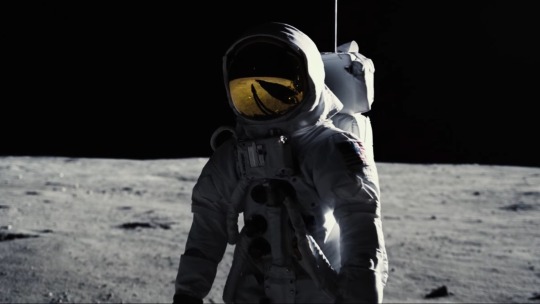
The very same elements that have led to much of the criticism of Damien Chazelle’s La La Land follow-up, will almost certainly prove to be the same reasons it will be afforded much deserved respect and acclaim in time. A very literal nuts and bolts re-telling of mankind’s greatest achievement, First Man is not all that interested in back-slapping or myth-building. It might be easier for many to imagine Neil Armstrong as an exuberant and deeply satisfied man, but his life was more complicated than that, and as such Ryan Gosling’s much-discussed, muted portrayal likely hit on the appropriate tone. Likewise, it would be nice to preserve a fairy tale image of NASA’s untouchable geniuses, but the film and the real life story is all the more interesting for wallowing in the toil, and incredible sacrifices of life, that were a part of man’s journey to the moon.
Having persevered through the quiet, rooted inner-workings and heartbreak that built up to the moon landing, Chazelle treats the audience to arguably the most spectacular moon sequence ever captured on film. The film ends having gifted a sense of wonder for Armstrong and his colleagues’ achievements, but understands the endless failures were just as central to that singular moment. Unlike much of Chazelle’s previous work, this film is not prepared to merely bow down to a narrative of genius.
8. Private Life - (Tamara Jenkins)
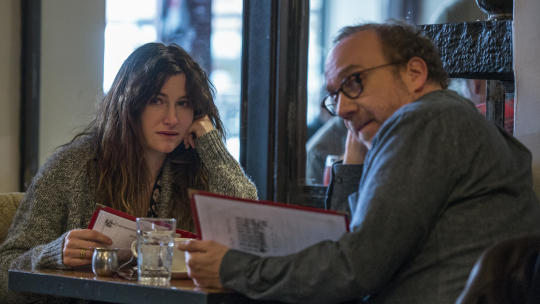
A masterclass in performance and writing from start to finish, Tamara Jenkins’ long overdue return to directing balances divergent tones throughout in a film that is jam-packed with humanity. Telling the story of a couple desperately trying everything within their power to have a child, Jenkins’ film runs through the full gamut of emotions, although it’s more than comfortable in spending prolonged spells on the extremes of uproariously hilarious and heartbreakingly crushing.
Kathryn Hahn and Paul Giamatti anchor the drama with great warmth and a genuinely believable love, while the supporting performances on the margins jump off the screen to provide no doubt as to the authenticity of this world. Private Life is the kind of intelligent and instantly relatable every day drama that rarely makes its way to the big screen any more. It’s also perhaps the strongest evidence in a long time for why cinema should be eager for these stories not to be consigned to the realm of TV drama.
7. Burning - (Lee Chang-dong)
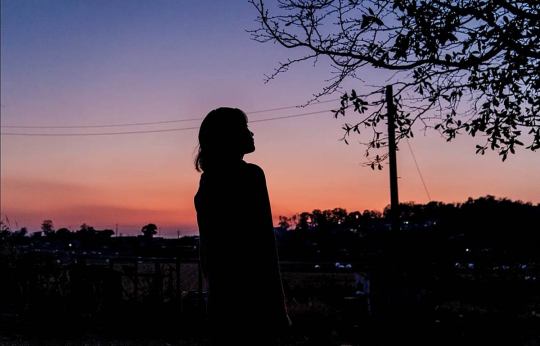
Burning is a mystery in every sense of the word. As a result, it arguably offers the purest dose of suspense that’s been seen on the big screen in quite some time. A sense of unease arises early in the film and only becomes more and more smothering as the action progresses. The lines are entirely blurred between the innocuous and ominous, and even by the film’s dramatic conclusion, for many they’ll remain equally unresolved.
In part, that’s the magic of Burning. It’s a film that not only drags the audience along with it on its journey, but displays a remarkable sense of confidence and control in doing so. The three leading performances in the film are spectacular, but Steven Yeun, in particular, is a revelation. Yeun’s Ben may be an incredibly sinister and manipulative villain, but it’s not a stretch to imagine his Gatsby-like figure being exactly who he presents himself as too. The film must be considered through the prism of the literary aspirations of its protagonist, Jong-su, and that creates valid suspicion. Regardless, Burning is an exquisitely crafted psychological drama and examination of social status along the Korean border, with equally stunning visuals to match.
6. Cold War - (Pawel Pawlikowski)

Inspired by his own parents’ love story, Pawel Pawlikowski took the intimate framing and crisp black and white of his Academy Award winning Ida, and applied it beautifully to a sweeping, European romance. Such is the power of cinema that Cold War feels truly epic. That’s all the more impressive considering it’s a deeply personal story captured in close quarters, which also zips in at a notably punchy 85-minute run time.
Combined with Lukasz Zal’s phenomenal cinematography, it’s clear that Pawlikowski has crafted a winning style. Still, the story is essential in providing the substance and, in this case, it’s thoroughly engrossing. Joanna Kulig is truly magnetic as the single-minded and enigmatic Zula, while Tomasz Kot carries himself with the effortless charisma and dignity of the archetypal, classic leading man as he embodies Wiktor. Every frame in the film would look at home in an art gallery, and yet Cold War carries memorable moments of substance beyond its aesthetic pleasures. Just as important to mention is the fact I never knew I needed Eastern European folk music in my life, and then this film’s enchanting songs took up permanent residence in my head.
5. Roma - (Alfonso Cuaron)

A true cinematic master, Alfonso Cuaron combined the bracing humanity of Y Tu Mamá También with the technical mastery of Children of Men to produce the most personal film of his career. In that regard, Roma may well live on to be viewed as Cuaron’s truly definitive work. This film captures the spirit that infuses his wider filmography with so much exuberance and life, while telling a story that has so much resonance in its own right.
A tribute to the childhood maid that raised him, Roma shines a light on the struggles of indigenous Mexican people, and the class and cultural divides that have long existed in Mexico City. Driven by an outstanding, naturalistic performance from first-time actress Yalitza Aparicio as Cleo, the film’s deliberate pacing provides the audience with the truest sense of the world in which its set, and the routines of its protagonist. Of course, it does this in a fashion which few other living filmmakers could dream of replicating. Cuaron’s camerawork is out of this world, particularly in the film’s two main set pieces, but just as relevant to the discussion that surrounded its Netflix release was the remarkably immersive sound design. I was lucky enough to catch Roma on the big screen, and there’s no doubt that it made the film an even greater cinematic spectacle. Having said that, the emotion at the heart of the film is deeply affecting, and it will therefore connect on screens of all shapes and sizes for decades to come.
4. If Beale Street Could Talk - (Barry Jenkins)
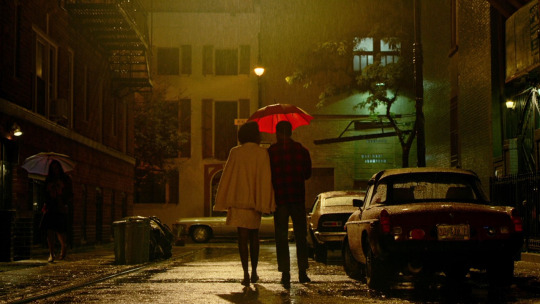
If Beale Street Could Talk is not only Barry Jenkins’ first film since his Oscar win for Moonlight, but it’s also the first English-language adaptation of a James Baldwin work. Combined, those elements make for an enormous weight of pressure and expectation, and yet Jenkins was more than up to the challenge of delivering beyond even the loftiest of expectations. Much like Moonlight, this is a perfect match of filmmaker and subject matter. Jenkins is undeniably ascending toward the status of being the premier cinematic chronicler of the African American experience. It’s particularly vital for that specific lens to his work to never be overlooked, either, as it gets right to the heart of the essential truths of his films.
Still, it all derives from a deeper understanding of emotion, society and relationships that ensure Jenkins’ cinema is also imbued with a layer of universality. Jenkins is a filmmaker of great empathy, and his collaborations with cinematographer James Laxton have seen him develop into the modern master of the close-up. Faces have rarely looked as rich and expressive as they do under Jenkins’ gaze, and it’s likely no coincidence that actors seem to find another gear for their performances under his watch. For this film, those elements all combine for a story rich with romance and tragedy, and one that’s sadly as relevant today as it was when Baldwin published the novel in 1974. To cap things off, Nicholas Britell’s score finds the most extraordinary balance between soaring romance and Herrmann-esque dread to emerge as cinema’s best soundtrack of the year.
3. Leave No Trace - (Debra Granik)
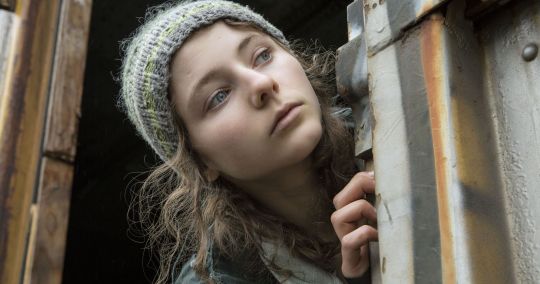
Debra Granik returns with her first feature since Winter’s Bone effectively launched Jennifer Lawrence’s career, and it was undoubtedly worth the wait. A quiet film with an ultimately pointed and heartbreaking message, Leave No Trace affords the leafy green environs of the Pacific Northwest the kind of breathing space society seems so unwilling to offer the film’s father and daughter duo.
Played by Ben Foster and Thomasin McKenzie respectively, there’s an arresting resilience and tenderness to the central relationship of Will and Tom. Living in public parks and deserted woodlands, Will and Tom don’t conform to the cut and dry definitions of family and home that the authorities around them are intent on enforcing upon them. Part of the magic of Granik’s film comes in the way it gradually channels the viewer to see things from their perspective. Why can’t contented people, doing no harm to others, be allowed to live in a manner of their choosing? Of course, the conversation is much more complex of that, and so, as Granik’s film ultimately reveals, is the telling of it in this case. On the whole, Leave No Trace is a truly mesmeric meditation on the impact of trauma, familial love and societal norms. Buoyed by McKenzie, who delivers one of the most astonishing performances of the year, it’s not a film that can be easily forgotten.
2. Minding the Gap - (Bing Liu)

It’s become unsurprisingly fashionable for American cinema to attempt to explain the ascendance of Trump, and the country’s wider social challenges, with on the nose films that offer minimal real depth or insight. Minding the Gap doesn’t fall into those same traps, though, largely because it seems like it never originally had aspirations to be as profound as it ultimately proved to be. As it turns out, simply charting the lives of a group of skateboarding friends over an extended period of time provides a fascinating look into the struggles of youth, and the baggage of history and circumstance, in small, forgotten towns.
Directed by Bing Liu, one of the aforementioned skateboarders, Minding the Gap’s subject matter ultimately proves to be remarkably complex and far-reaching for a 93-minute documentary set on the streets and in the homes of Rockford, Illinois. The young men’s interconnected lives ultimately give way to a shared history of previously undiscussed struggles. Among the young men’s commonalities are exposure to domestic abuse, experiences shaped by race, immense financial struggle, the confusion of modern masculinity, and, of course, a passion for skateboarding. There’s certainly some optimism to be found here, but there’s also an overwhelming sense of sadness for how these young men have been shaped by past acts and histories that were always beyond their control. If you wanted to even try to explain America in 2019, understanding those challenges would be essential. In truth, though, the same difficulties could be applied, and used as explainers for social issues, across the wider Western world. This is a deeply human story and, I’d argue, the year’s most touching film.
1. First Reformed - (Paul Schrader)
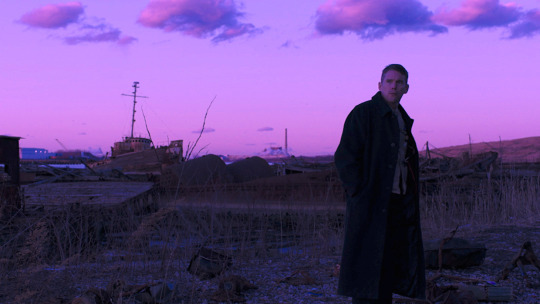
I’m not sure how many people were expecting it, but at 72-years-old, Paul Schrader remains one of cinema’s most vital and striking voices. With a deep well of cinematic knowledge to draw from, First Reformed sees Schrader borrow liberally from many of the form’s great masters, while still crafting an incredible story that is undeniably spoken in his own abrasive tone. Bergman’s Winter Light, Dreyer’s Ordet and Bresson’s Diary of a Country Priest are blatantly obvious inspirations, but the voice of Taxi Driver’s Travis Bickle, Schrader’s own most famous creation, is equally present in the character of Reverend Ernst Toller.
Toller is played masterfully by Ethan Hawke in the best performance of what’s already been a rich and fascinating career. A clearly measured and reasonable man, Toller’s journey ultimately brings him to breaking point as those around him ignore his message in the same way that he attempts to turn a blind eye to his ailing health. Schrader’s writing tackles global warming, and the prospect of impending doom that accompanies it, in the kind of blunt and unflinching terms that should now be unavoidable but tragically remains all too rare. By the same token, as Toller begs for consideration of whether God can forgive for the damage done to the earth, his preachings fall on the deaf ears of an immensely selfish world. In Schrader’s mind, there’s no question that drastic times call for drastic measures.
Even with such an urgent message, a fantastic script, and a generational lead performance, First Reformed wouldn’t be as great as it is without its stunning array of visuals. The film’s visual treats range from extreme close-ups that make a map out of Hawke’s wrinkled forehead, to the electric and lustrous pink of Toller’s heartburn medicine as it mixes with his whiskey, and to the vivid anger of the early morning sky. Quite simply, it’s a feast for the eyes, a jolt for the mind, and an assault on the soul.
#film#movies#cinema#oscars#first reformed#minding the gap#leave no trace#if beale street could talk#roma#cold war#burning#first man#shoplifters#private life#widows#the miseducation of cameron post#the zen diaries of garry shandling#isle of dogs#columbus#you were never really here#the rider#lean on pete#happy new year colin burstead#a star is born
1 note
·
View note
Text
The Rogue One novel, schaloime and I: A Christmas cry fest
Sooo around Christmas I read the Rogue One novelization. And because I lost it at the first few pages already I decided that I couldn’t suffer through this perfection alone and started texting quotes and comments to @schaloime (mainly KRENNIC ALL THE WAY)... And, well. I don’t want to lose this list of hilarity and heartbreak, so I’m posting it now for everyone’s amusement. :D (Comments are of course translated from a wild English/German mix and a bit edited, but convey the fun we’ve had really well. X’D)
This book gets a very high recommendation from me, just saying before the cut! I love it to pieces, it even made my second trip to the cinema a lot better and gave me so much! 11/10 pathetic wine mom Orsons, would (and will) read again
(Come yell with me about it, please!)
He had killed a city. He could kill a world.
Boy, Krennic is such a pathetic squabbling schoolboy X'D lots of fun when he’s pleased about something he did well, like "I AM THE MASTER OF THE UNIVERSE fuck off Tarkin noooo" When they’re in the same room he’s always THIS CLOSE to stomping his foot, crossing his arms and whining
He felt like he finally deserved some attention from the emperor.
What is this book. Help.
[insert a lot of fangirling about the way the characters are written, how you’re in a different head with each part/chapter and how they all have clearly different ways of thinking and decision-making]
He’d settled himself in his seat with a glass of wine and a datapad by the time they’d left the docking bay.
Already the second scene in which Krennic lounges around and drinks wine. (This time the flight to Eadu, first time was after work on the Death Star. He also apparently likes to walk miles and miles through the construction and is quite pleased about having built all this and knowing every lil detail.)
Galen Erso, whom he’d given every chance. Galen Erso, whom he’d nearly died for once on that sad scrap of farmland. “I thought we were past this,” Krennic murmured to himself, with a bitter smile."
Just in - Krennic’s fuckin’ gay for Galen (as if we didn’t know that) and ALWAYS thinks about either him or Tarkin.
He’s really like HALF OF THE FANON!HUX headcanons I’ve encountered in fics. [slime and I began to flail helplessly because we can’t handle him. spoiler: we didn’t really stop screaming until the end.]
During the flight to Eadu, Krennic had stoked the fury in his heart. Fueled by outrage and humiliation, its fire burned bright enough to warm him in the chill that swept through the shuttle.
... Am I reading fanfic for real now or what.
Krennic smiled acidly and said the words he had selected with care aboard the shuttle:
Also just in: Krennic spent the trip to Eadu drinking wine and writing a speech. An epic speech:
“Gentlemen. One of you has betrayed the Empire. One of you conspired with a pilot to send messages to the Rebellion. I urge that traitor to step forward.”
Krennic. How often did you practice that in front of a mirror until you made sure you won’t forget a single word of it?
If by some miracle Cassian got off a second shot, he decided Krennic would make an excellent target. The Empire could only be improved by the loss of another high-ranking blowhard.
GOOD BOY. (Cassian’s thoughts are really interesting in general.)
“Very well,” Krennic said. “I’ll consider it a group effort, then.” The words were cruel and sweet. Krennic felt no shame in deriving satisfaction from justice ruthlessly applied.
PLEASE. slime: gaaaaaaaaay
He looked down at himself and straightened his uniform with a tug. He noted black smudges from smoke and charred metal, a patch of red where someone—probably him—had bled. He wondered if he would have time to clean up before arriving. Or maybe Lord Vader would respect a man who’d seen combat.
Or: Krennic fainted right after entering the shuttle for departure from Eadu, got the order to go to Mustafar upon waking and dives headfirst into the REALLY IMPORTANT QUESTIONS. I wish I were kidding.
Was Vader mad? Was this his homeworld? Perhaps he wasn’t human beneath his armor; perhaps that forbidding black suit did more than replace lungs and limbs damaged in battle, and instead allowed a creature born in magma to survive the chill of space. Or maybe he lived on Mustafar because he enjoyed burning his victims alive.
... Krennic lands on Mustafar and has some thoughts about how Extra™ Vader is.
Vader had let him live. Vader had judged him too valuable to kill—and by extension, the Emperor recognized his value as well. Tarkin’s mutiny, his seizure of the Death Star, had been forestalled. And Krennic had yet to reveal Tarkin’s greatest error—how in destroying Jedha City, Tarkin had failed to blockade the moon, failed to ensure against survivors. For how else could the rebels have infiltrated Eadu? The traitorous pilot had come from Eadu and fled to Jedha; his message had escaped. Only Tarkin could be held responsible for that.
Oh BOY. Hubris much? slime: “ "Look at me, Look at me!" me: Everyone else in this book has thoughts that are more than that pathetic blubbering. Even JYN, who’s at war with her hatred for everyone who’s ever left her, EVEN HER WHO HAS BEEN A REAL EGOIST UP UNTIL NOW. But nooooo, Krennic is the only Special Snowflake™ in the universe. At least in his own head.
He was ready to leave the madhouse that was Mustafar, but he was suddenly uncertain he could ever escape Vader’s shadow.
How about you don't even try.
She held back a laugh and looked to Cassian. The man who’d betrayed her. The man who’d admitted his guilt and decided to fight for her. He saw her staring and looked back at her quizzically. It wasn’t how betrayals were supposed to go.
U don't say.
It was a bad plan. It had all been a bad plan, of course, starting with Galen’s message and ending with this unauthorized raid on Scarif. Now he was, what—defecting from his defection? If he survived, he’d be an Imperial traitor and a rebel mutineer. He’d be lucky to see the inside of a Yavin prison cell.
Bodhi, talking a mile a minute even in his thoughts. But he’s happy that there are most likely no mind-reading tentactle monsters on Yavin... At least something.
She almost winced when she looked at Cassian, wearing an officer’s suit and cap like they were perfectly tailored. Even the code cylinder in his pocket was at a regulation angle.
Jyn has her priorities straight. Always get a look while you can.
He stood at a metaphorical cliff’s edge, stamping his foot in an effort to cause an avalanche. With Galen Erso’s treachery undone, he would gain the allegiance of Vader. With Vader’s backing, he would expose the incompetence of Tarkin—the revelation of rebel survivors from Jedha. With Tarkin humiliated, Krennic’s command of the Death Star would be uncontested, and he would confer with the Emperor himself as to how it might best be used. Krennic would be, in every way that mattered, the most powerful and decorated man in the Empire.
I... Wait, what. Krennic, daydreaming.
Grand Moff Wilhuff Tarkin made it a point not to dwell on the flamboyant ambitions of Orson Krennic. Over the course of more than a decade, the director had gone from a nuisance to a genuine threat and back again, all the while demanding far more attention than Tarkin was prepared to grant him.
Thoughts from Tarkin! As if Krennic was a lousy annoying little fly.
Cassian had denied him that exquisite sense of purpose and replaced it with individuality. With individuality came doubt and cynicism: an awareness not only of the odds of success or failure but of those outcomes’ repercussions.
Individuality creates cynism. Now I have feels for a droid, thx Kaytoo.
With one second left until total shutdown, K-2SO chose to mentally simulate an impossible scenario in which Cassian Andor escaped alive. The simulation pleased him.
KAY. T___T
[everyone’s last sentence in their last part is amazing tbh]
As he emerged from the command center, two death troopers fell into step behind him and he thought of another day long before: another planetfall; another squad of troopers; and another danger to his life spawned by Galen. That day on Lah’mu had ended in victory, too. Orson Krennic was going to war.
Drama much! Firm belief now: He has that cape only to imagine himself in such a moment, with that last sentence as caption, for the epic picture he strikes in his own imagination...
But before Baze could fire, Chirrut rose from the bunker and stepped into sunlight.
First thought: oooh why do scenes with those two always feature such impressive pictures in my head Second thought, because the part was over and another person took over: FUCK YOU ALEXANDER FREED FUCK YOU SIDEWAYS I waited the WHOLE DAMN BOOK for a scene from Chirrut’s POV and just accepted that I won’t get one AND YOU DROP THE PART AT THE MAIN SWITCH ON ME FUCK YOU FUCK YOU HARD
[This was also when I started crying. I cried during three books my whole life (I cry frequently at movies, and I read a lot, so it takes a special something for that to happen). Be proud of yourself, Alexander Freed. You wrote *bawled her eyes out*-book #4.)
(...) without the temple he could not truly be a Guardian of the Whills; without joy and frivolity he could not be a clown and jokester among sober peers; without the Holy City he could not be a protector of his beloved world (...)
Fuuuuuck youuuuuu. T____T
He was dying, of course. He felt Baze’s heavy, familiar tread pound the ground, smelled his brother’s sweat as he leaned close. He wanted to say, Baze! My eyes—I can’t see! but Baze Malbus had always needed comfort more than humor.
THIS GUY I S2G.
But of course the Force had reunited them before the end.
Alright, I died, see you on the other side.
At last report, the data vault itself had been breached. It was a show of incompetence so great that Tarkin was almost curious to know how Krennic might explain it away.
Tarkin is a lil bitch sometimes. It’s great.
He was not the Empire—not every moment of oppression and indignity and torment she had ever suffered. He was an Imperial, a petty, spiteful, scared little man who’d forgotten his own atrocities. And he didn’t know her at all. She decided to make him remember.
Jyn can’t read a lot of people, but it seems to be easy for her with Krennic. X’D He only ever was “the man in white from her nightmares” until they finally meet. And up until his death she does know who he is and what role he had in her life - but never his name. Well, Orson. Sucks to be you. No immortal name.
He could follow Galen Erso’s thread through his life. He could see the full extent of the tragedy, the waste of effort on a wasted man. But what about before? He sought refuge in his childhood, tried to recall an Orson whose hopes had not yet been cast in shadow…
KRENNIC. Can’t you even in your LAST SECONDS stop thinking about how deeply ingrained Galen was into your life and how pathetic you were??? THIS GUY.
Orson Krennic, advanced weapons research director and father of the Death Star, died alone on Scarif, screaming in fury at Galen Erso, at Jyn Erso, at Wilhuff Tarkin, and at all the galaxy.
... In his very last moments he imagined himself in full glory on the Death Star, his triumph, and in the middle of those cozy thoughts about his creation, the one thing he knows in and out, he finally noticed what Galen sabotaged. Ooops. Sucks, right?
I cried a lot. Slime cried a lot. And I’ll end this with the one sentence that really stuck with me and won’t leave my head for a long time...
Like a pilot should, he died with his ship.
Goodbye, Bodhi. Not all alone after all.
#Rogue One#rogue one: a star wars story#rogue one novelization#Orson Krennic#Star Wars#I wish I were sorry#not really but yeah#it was a wild ride and I enjoyed every second of it!#book rec#not a review#but a lot of fun#my stuff#friends#thx slime for letting me text you all the screaming :D#you deserved to suffer with me#I still blame you for everything
30 notes
·
View notes
Text
A Look Back at Those We Lost in 2018
Below is a full index of our tributes from 2018, celebrating the unforgettable talent we lost like Penny Marshall, Stan Lee, Aretha Franklin, Burt Reynolds, and more. Each tribute includes a passage from the obituary, a credit to the respective author, and a link to the full piece.
John Mahoney (1940-2018)
“Whether it was in film, on TV, or on stage, John Mahoney found a way to always feel like he was present in a scene, listening to the actor opposite him and not just waiting to say his rehearsed lines. I was lucky enough to see him at the Steppenwolf, and he was so completely captivating that he stole nearly every scene he was in. What he did was so subtle—whether it was in “Frasier,” “Barton Fink,” or on stage—that it probably didn’t get the attention it deserved, but he’s one of those rare actors about which one can honestly say that he made everything he was in just a little bit better. And sometimes a lot.” (Brian Tallerico) [link]
Jóhann Jóhannsson (1969-2018)
“He leaves behind an incredible discography, made from his sensibility to tell stories with minimalist melodies, grandiose arrangements and meditative pacing that challenged the conventions of music composition. Aside from his own accomplishments as a nearly unclassifiable composer, his film work was pivotal to helping numerous movies deeply resonate with audiences.” (Nick Allen) [link]
Steven Bochco (1943-2018)
“On the Mt. Rushmore of TV creators next to faces like Norman Lear and David Chase, there should be a spot reserved for Steven Bochco, the man who changed the medium of television drama in the way he emphasized ensemble over star vehicles and multi-episode arcs over standalone stories. Shows like “Hill Street Blues,” “L.A. Law,” and “NYPD Blue” earned Bochco a stunning 10 Emmy awards, along with prizes from the Directors and Writers Guilds of America and four Peabody Awards. In 1996, he was inducted into the Television Hall of Fame. He should probably have his own wing.” (Brian Tallerico) [link]
Isao Takahata (1935-2018)
“As a producer, he co-founded the legendary Studio Ghibli with the legendary Hayao Miyazaki and would go on to collaborate with him on a number of his internationally celebrated films as a producer. […] Without his efforts and influence over the years, it is safe to say that the animated film industry would be a markedly different beast than it is now, and definitely a less interesting one to boot.” (Peter Sobczynski) [link]
Milos Forman (1932-2018)
Milos Forman, the Czech-born filmmaker who helped revolutionize cinema in his home country before moving to America and becoming one of its most celebrated directors as well, has died. The man behind such celebrated films as “One Flew Over the Cuckoo’s Nest” (1975) and “Amadeus” (1984), both of which won Oscars for Best Picture and earned him prizes for Best Director, passed away from what was described as a short illness at the age of 86 at his home in Connecticut. Mixing together surreal humor, documentary techniques and an interesting blend of cynicism and affection, Forman helped put Czech cinema on the map. When he applied those same techniques to the projects produced in his adopted country, the result was some of the most incisive, knowing and most profoundly American films of his era. (Peter Sobczysnki) [link]
R. Lee Ermey (1944-2018)
“Ermey was fun to watch. He became an actor by playing himself, a rare breed of man who was familiar as himself—an American, a Marine and later, an actor. While many scream over Hollywood's liberal slant or other preconceived notions, Ermey's presence on screen was an example talent always wins out. We're all winners for having the Sarge in our viewing life.” (BJ Bethel) [link]
Anne V. Coates (1925-2018):
“Throughout a career spanning over 60 years, she worked on over 60 films, receiving numerous accolades that included two Oscars and four additional nominations, and is credited with creating perhaps the most famous single cut in movie history. [...] In 2003, she was named an Officer of the British Empire by the Queen in celebration of her career. In 2007, the British Academy of Film and Television Arts, who had in the past nominated her work on “Murder on the Orient Express,” “The Elephant Man,” “In the Line of Fire” and “Erin Brockovich," presented her with a Lifetime Achievement Award. She received her second Oscar, a Lifetime Achievement Award, in 2017.” (Peter Sobczynski) [link]
Margot Kidder (1948-2018)
“She was a spiky brunette with a sexy low voice, but she had her goofy side. Her “Superman” director Richard Donner once said that Kidder was so physically maladroit that if she walked into an empty room with a small trashcan in it she would somehow find a way to get her foot caught in that trashcan.” (Dan Callahan) [link]
Tom Wolfe (1931-2018)
“As a journalist, he would take subjects that I would ordinarily have little interest in—Southern California car culture, LSD, the early days of the space program—and attack them with both a zingy writing style that was practically novelistic in nature. He had an enormous depth of detail that made the subjects come to life in the most memorable and unexpected of ways. Later on, Wolfe applied those same techniques in the service of narrative fiction and came up with a series of best-sellers that included one of the most popular and influential novels of the second half of the 20th century.” (Peter Sobczynski) [link]
Philip Roth (1933-2018)
“Early novels like Goodbye, Columbus and later novels like The Humbling might show differences in relative aggressiveness but they grow from the same work aesthetic and the same desired relationship with the reader. Much like the greatest films, they pick you up, they draw you in, they show you a world—and the world, usually, is not the world you would have dreamed up. It is a world in which you are morally and intellectually uncomfortable.” (Max Winter) [link]
Harlan Ellison (1934-2018)
“That said: if you want to send Ellison off in style, do as he encouraged, and not just as he wrote: read more; talk back to any authority figure within earshot; raise a stink if you feel like you're being taken advantage of, even if it's by a friend; value your time, and don't be afraid to walk away from somebody you love if they don't; respect artists by paying for their work; denounce superstition whenever you can, especially when it seems harmless; reject platitudes, and don't let anybody tell you that your informed opinion doesn't matter. Life may be a series of confrontations, as Ellison said at least once, but you can't let the bastards get you down.” (Simon Abrams) [link]
Claude Lanzmann (1925-2018)
“The 1985 documentary “Shoah” was a movie whose critical reception, at least in its United States incarnation, was defined by a slight paradox. The nine-and-a-half hour movie about the Holocaust, specifically the Nazi death camps operated in Poland, was a work utterly defined by the personality, the aesthetic, and the moral determination, and determinations, of its director, Claude Lanzmann. [...] Lanzmann’s flame was an uncommon one. Filmmakers and people of conscience and compassion the world over would do well to keep its memory close by.” (Glenn Kenny) [link]
Tab Hunter (1931-2018)
"And yet, it was the very things about him that the system sought to repress—such as a sly, self-effacing sense of humor and his homosexuality—that helped breathe new life into his career a couple of decades down the line. Now that he has left us, three days before his 87th birthday, Hunter will be remembered not just as a pretty face with an admittedly memorable name. He'll also be celebrated as a trailblazer whose accounts of his experiences as a gay matinee idol in Hollywood at a time when such things were unheard of helped pave the way for acceptance." (Peter Sobczynski) [link]
Aretha Franklin (1942-2018)
“Her lyrics told you to think, but her voice taught you to feel. She was a fountain of useful knowledge, too: She could tell you who was zoomin’ who, where Dr. Feelgood’s office was and the exact speed limit on the Freeway of Love. She also knew that the only path to immortality was through her art, so she infused every one of her performances with an otherworldly staying power.” (Odie Henderson) [link]
Neil Simon (1927-2018)
“Neil Simon’s work was often about human connection. It was a message often hidden in humor, but he was clearly a playwright and screenwriter who believed in empathy and compassion, bringing together disparate personalities to ask a simple but crucial question: If Felix and Oscar can get along, can’t we all?” (Brian Tallerico) [link]
Burt Reynolds (1938-2018)
“His screen persona often fused the strong-silent jock-adventurer with the anti-establishment wiseass, a combination that had never been attempted in movies before, at least not to such staggering effect. In the '70s and early '80s, Burt (that's how you referred to him, as Burt) was the biggest movie star in existence.” (Matt Zoller Seitz) [link]
Scott Wilson (1942-2018)
“Every time I got to talk to him, he was unfailingly kind and open and, best of all, filled with great stories. I mention all of this here upfront because as you read this, I want to stress the fact that he was not just a great actor but a great guy as well. [...] Because of his association with “The Walking Dead,” it was ensured that his passing would not go unnoticed and I can only hope that the renewed interest in the man will inspire some to go looking at some of his past work to see what a truly gifted and memorable actors he was. He may not have been the most famous of actors but when it comes to the things more important than fame—little things like talent and decency—what he left behind will more than stand the test of time." (Peter Sobczynski) [link]
Stan Lee (1922-2018)
“It is impossible to fully grasp the influence Stan Lee had over the world of popular culture since he first achieved fame in the Sixties. As a writer, editor and publisher of comic books, he, along with an extraordinary group of collaborators, revolutionized and expanded what could be said and done in that particular art form in ways that reverberate to this day.” (Peter Sobczynski) [link]
William Goldman (1931-2018)
“William Goldman changed the perception of the screenwriter in Hollywood, often refusing to give in to studio or directorial demands—his list of “unproduced screenplays” is as long as the ones that got made. He was an icon in his industry that helped pave the road for well-known screenwriters that would follow him like Aaron Sorkin and Cameron Crowe. Movies wouldn’t be the same without him.” (Brian Tallerico) [link]
Nicolas Roeg (1928-2018)
“Roeg was one of the least celebrated influential filmmakers of the last half-century. In terms of the techniques that he helped refine, he's as important as Orson Welles or Stanley Kubrick. And if you judged contemporary cinema purely in terms of the grammar that it has borrowed and retained from past masters, you might have to give Roeg the edge, because of how he told stories.” (Matt Zoller Seitz) [link]
Ricky Jay (1946-2018)
“He was a sleight-of-hand magician whose illusions startled and amazed audiences throughout the world; a student of the history of magic who used his extensive knowledge to pen several books, and put together a number of museum exhibitions and lectured extensively on the subject; an actor whose cagey screen presence made him a favorite with such filmmakers as David Mamet and Paul Thomas Anderson; a crucial man behind the scenes who helped create a number of the screen’s most celebrated illusions.” (Peter Sobczynski) [link]
Bernardo Bertolucci (1941-2018)
“Bertolucci was the opposite of austere, providing the element of danger in these movies—this was dependent on plumbing a sub-conscious that could be seen as out-of-date in some areas, but that was part of taking such risks. Sometimes it felt like Bertolucci was providing the idea of a certain type of Italian film director of his time, and that idea was meant to be more than the sum of his filmography.” (Dan Callahan) [link]
Penny Marshall (1943-2018)
“To some, she was the co-star of one of the most popular sitcoms of its era and a familiar face/voice on any number of shows over the years. To others, she was a trailblazing filmmaker who became the first American woman to direct a movie that made over $100 million at the box office, a feat she would repeat for a second time just a few years later. Whichever side of the camera she was working on, Penny Marshall was a consummate entertainer who could handle everything from the broadest slapstick comedy to serious drama.” (Peter Sobczynski) [link]
from All Content http://bit.ly/2TogguT
0 notes
Text
The Ides Of June 2017
Hello there! And welcome all to this month’s ‘The Ides Of’ column, where I write just a little bit about all of the various stuff and nonsense I’ve been enjoying over the past 30 days. Yes, this instalment is late, but it’s been lovely and warm, so I haven’t had the inclination to stay indoors and write this stuff. I’ve actually been outside and I’ve even been wearing shorts! What is the world coming to?
This month is a decent one I think, there’s a lot of movies (although some are rewatches), 2 intriguing books, more great TV and I bought another Switch game! Unfortunately there’s no new music this time out, but next month will change that, with new Royal Blood and Public Service Broadcasting albums on the horizon.
So let’s do it to it!
—
Movies
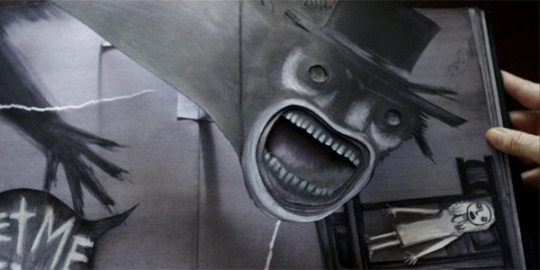
Lot’s of movies to talk about this time, so let’s not waste any time with preamble! First up is Prometheus (Ridley Scott 2012), which I finally actually got around to watching due to the release of it’s sequel, Alien: Covenant, which I haven’t actually seen. That’s kind of me in a nutshell really, the release of a new thing makes me realise I haven’t actually seen the old thing yet! See also Schmidt, Kimmy later on. Anyway, I mostly enjoyed Prometheus, although as the rest of the internet has already explained ad nauseum, it certainly has it’s problems and, at a bit of a remove, doesn’t really make that much sense. I like the previous Alien films, and have the Quadrilogy box-set, but wouldn’t say I was any kind of mega-fan, so I don’t have any real issues per se with Scott going back and removing some of the mystery. Especially because, every answer he gives only raises more and more questions! I came out of the film wanting to know more, so in that way, it was a success. I think the things that really stood out to me here were the visuals, because whatever you think of Ridley Scott, the man has one of the best eyes for science fiction out there, and also the fantastic performance of Michael Fassbender as the android, David. He is just superb, although his role in the plot is one that frustrates me, as it’s never really explained why David is fucking with things, he just… is. Maybe the answers are waiting for me in Covenant? I also found that frustration with Charlize Theron’s character. She’s just kind of a dick for no reason, you find out Weyland is her dad… and then she dies. There must be more to it than that, but there isn’t. A lot of the other performances are like that really, good actors doing something potentially good, but not as much as you like, Idris Elba, Race Spall and Sean Harris all deserve more I think. Especially as Noomi Rapace, who is nominally the lead, isn’t quite as interesting, at least to me. Her performance is good, particularly in the fantastic ‘abortion’ scene that’s probably the film’s highlight. Unfortunately for Rapace, in an Alien film, a female lead is always going to be compared to Sigourney Weaver, and she doesn’t quite match up! Prometheus is, I would say, not a particularly great film, but it is a very interesting one.
Next, I watched a documentary that actually uses footage from Prometheus in parts, Jodorowsky’s Dune (Frank Pavich 2013). This film tells the inside story of Alejandro Jodorowsky’s failed attempt to adapt Frank Herbert’s ‘Dune’ novel into a movie in the 1970s, and wow, this movie that never got made is far more interesting than most ones that do make it! Jodorowsky’s ambition here was huge, and I would go as far to say a bit insane. If you’ve seen any of his actual films (I really like El Topo), you’ll know that he’s a bit out there, but this would have been something else. He wanted Salvador Dali, Orson Welles and Mick Jagger in the film, he made his young son learn to swordfight, it is mental. The film features some fascinating interview snippets not just with Jodorowsky and others who worked on the film, but also with outsiders like Nicolas Winding Refn, who once sat with Jodorowsky all night whilst he acted out the film. In the end, this is not just an intriguing look at a film that never came to be, but also a great monument to the power of creativity, and a unique creative mind. Because even in failure, Dune had a massive impact. It brought Jodorowsky together with Moebius, and they would later collaborate on the Incal comic series. It had a huge influence in so much other science fiction, including Alien (Dan O’Bannon and HR Giger worked on Dune, and some of the structures in Promethus are straight from the Dune sketchbook), Flash Gordon, Star Wars and basically… everything we nerds love today. My only complaint would be that, a lot of the interviews were in French, and there were no subtitles, so I couldn’t grasp what Michel Seydoux was saying. But other than that, highly recommended.
I wrote earlier about a Michael Fassbender performance being the best part of a movie, and whilst that’s true for Prometheus, it’s definitely the case for X-Men: Apocalypse (Bryan Singer 2016), which I found to be really quite a mess, and definitely indicative of how far behind the X-Men film franchise is lagging behind others right now (please note, I haven’t seen Logan yet). As a comics fan, I of course love the X-Men, but I must admit that I haven’t really been behind the X-Men movies in a while. X3 was the last one I saw in the cinema, and Deadpool and First Class are probably the ones I would actually say were good movies these days. I haven’t watched 1 or 2 in ages, but I fear they won’t have aged well. Apocalypse is indicative of this malaise really. The plot is incredibly perfunctory, with Apocalypse just coming back, being evil, and the X-Men stopping him. There’s barely a hint of a plan from him, which is incredibly disappointing, especially as it means the normally brilliant Oscar Isaac is just wasted under layers of Ivan Ooze make-up. The rest of the cast is actually good, I mentioned him earlier, but Fassbender is just superb as Magneto. He and James McAvoy’s Professor X basically make this period piece series work singlehandedly. I initially rolled my eyes at the film manipulating our emotions by giving Magneto a family only to immediately kill them off, but damn, Fassbender sells it. Jennifer Lawrence is once again inexplicably front and centre as Mystique. I really find it weird how they’ve insisted on making her such a big hero, obviously it caught them off-guard after First Class how big a star she became, but it just doesn’t make sense to me, especially when compared the the comics. The film re-introduces a lot of familiar faces with new actors, so we now have a teen Cyclops, Jean Grey, Nightcrawler and Storm. These young actors are fine, but they aren’t given too much to do really. It pissed me off how the film has Storm side with Apocalypse for most of it and then switch sides and tries to plays it off as a big surprise. Storm one of the most famous X-Men of all of them, everyone knows she’s a good guy, you can’t get away with silly shit like that. This film just felt a bit flat and uninspired throughout, there’s an entirely unnecessary Wolverine cameo (that I actually managed to be surprised by), a decent enough Quicksilver sequence that just feels like a poor re-tread of the one in Days Of Future Past, and just a whole heap of bad CGI and lame moments. I liked parts of it, but it in no way stands up to the MCU, and isn’t even aggressively stupid bad like Suicide Squad. I really hope the X-Men movies can improve, I know that Logan is supposed to be good, and the Legion TV show was amazing, but there needs to be another good, main franchise X-Movie. Will Dark Phoenix manage that? I have my doubts. Maybe New Mutants will be good.
Speaking of New Mutants, the future Magik, Anya Taylor-Joy, is the star of the next film on the docket, The Witch (Robert Eggers 2015). This is a very atmospheric and creepy horror film set in 17th Century America, as an isolated Puritan Family comes face to face with, well, a witch. This is my kind of horror movie, not so much made up of jump scares and gore, but instead an overall unease about it, and slow ramping up of terror until everything boils over into weirdness and a talking demon goat. There are some truly unsettling sequences in this story, and it really did keep me guessing throughout as to what was going on. One thing I really appreciated was the script, as Eggers tried to make it as period accurate as possible. At first the language seems odd, but you soon get used to it. The performances are all strong, Taylor-Joy is excellent as Thomasin, and it was great to see Leeds’ own Ralph Ineson get a starring role after being excellent on so many TV shows throughout the years. And what can you even say about Black Phillip? A tour-de-force from that Goat. The Witch is really strong film, but it is genuinely scary, it took me about 3 months to build up the courage to watch it, and it has stuck with me!
I continued the horror by watching The Babadook (Jennifer Kent 2014), and yes, I was inspired to watch it because of the ‘Babadook as a gay icon’ meme, which is just hilarious. I didn’t find that much queer subtext in the film (although he does come out of a closet…) but I did very much enjoy it. Like The Witch, this film delivers the kind of scares I like, psychological, and lingering in the background, and most importantly, rooted in real human emotions. The Babadook might not even be real, and is probably some kind of grief manifestation. But, again, like The Witch, I enjoy the ambiguity about it. Another thing I really liked is how willing the film was to make the kid into an unlikeable dick, whilst also still allowing us to care about him. The two main characters here a very complex, and there’s a lot to unpack still. The design of the Babadook is another really cool thing about this film, it’s just iconic (gay or otherwise) and I think this character could end up in the pantheon of great monsters, it really is that effectively creepy.
I also re-watched 2 big blockbusters on Blu-Ray that I wrote about more extensively when they were in the cinema; Doctor Strange (Scott Derrickson 2016) and Rogue One: A Star Wars Story (Gareth Edwards 2016), or as I like to call them ‘Mads Mikkelson does Disney’. Both held up on a second viewing, and I think I actually liked Doctor Strange more this time around. The visuals were amazing, and, along with Guardians Of The Galaxy 2, show that they really are willing to take the Marvel Cinematic Universe into different places. Rogue One’s tragic ending didn’t quite hit me as much this time out for obvious reasons, as I knew it was coming, but I still enjoyed it. I paid more attention to the performances, in particular Diego Luna and Ben Mendelsohn. I think Cassian Andor might be one of the most interesting characters in a Star Wars movie, I certainly would like to see more of his story, so get on it Marvel!
Television
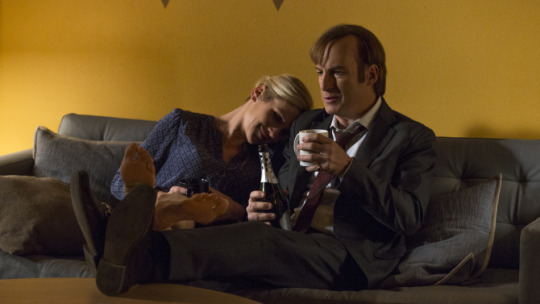
There’s no new or returning shows this month, it’s all quick hits, and I will try and be quick!
Brooklyn Nine-Nine (FOX) wrapped up it’s season in fine form with a bunch of double-episodes. I really enjoyed Gina Gershon’s guest role, and the way the season ended, with Rosa and Jake being sent to prison was a great cliffhanger, even topping last years! As an Earwolf podcast nerd, it was of course also great to get cameos from Scott Aukerman, Kulap Vilaysack in the finale. I get a kick out of hearing those familiar voices come out of actual faces. This is now one of the most consistently funny US sitcoms out there… hell, it’s one of the few.
The ending of Better Call Saul (AMC) Season 3 was also very good, particularly the fate of Chuck, which was just shocking and tragic. When BCS is on, it’s the best drama on TV, and it certainly has the best characters. I will say though that this 3rd season has been a bit too disjointed, as those characters were too disparate. I can’t remember the last time Jimmy and Mike shared a scene (Episode 4?) and the same can really be said for Mike and Nacho. At times it felt like 2 different shows, maybe even 3, happening concurrently. Now, all of those shows were good, but it didn’t cohere as well as it might. Hopefully Season 4 will bring things closer together. Gus’ knowing look at the end seems to indicate he knows what Nacho was up to, so I can imagine the criminal element consolidating. Plus, with Chuck dead and Kim sidelined with injury, things are bound to change for Jimmy McGill, and I imagine we’re only going to get more and more of Saul Goodman. This was an odd year for the show, but it’s still excellent, and Michael McKean really should win all the awards, he was superb throughout this season, making us loathe and sympathise with Chuck all at the same time. Any awards that don't go to him should go to Odenkirk of course.
I’m basically just going to be talking about finales this month aren’t? Archer (FXX) ended it’s ‘Dreamland’ storyline with some seriously surprising violence, I couldn’t believe how far they actually took Barry’s rampage. In the end, I thought the concept of Archer being in this Noir fever dream petered out a bit, and they didn’t stick the landing. But it was still funny, with all of the voice actors on full cylinders. I do think that it might be time to end Archer though, they’ve stretched this tone and character as far as it can go. After a whole season that’s a dream, what next? Take a leaf out of the LOST podcast joke and do a zombie season?
Gotham (FOX) got even more silly and ridiculous at the end of Season 3, with the introduction of Ra’s Al Ghul and the revelation that long-time henchman extraordinaire is Butch Gilzean is actually called Cyrus Gold, and is therefore eventually going to become Solomon Grundy. As dumb as this is, I loved it. This show is best when it verges on the camp, and these last few episodes delivered, particularly as Morena Baccarin finally got to be a bit interesting when playing an ‘evil’ Leslie Tompkins. It was great fun seeing her chew the scenery. And man, that final scene, where Bruce Wayne goes out on the streets to fight crime… it’s mad that they are doing that so soon, but I don’t care at this point. Gotham needs to go full on Adam West (RIP by the way) and never look back.
I must admit to being rather disappointed by the finale of The Flash (The CW), because the fake out of it actually being HR to die instead of Iris felt way too easy, and also because HR was just the best. I’ll miss him, but I’m sure whatever the hell version of Wells Tom Cavanaugh plays in Season 4 will also be great. The real highlight of this last set of episodes was the return of Captain Cold in ‘Infantino Street’. I can’t say it enough, but Wentworth Miller is just the best in that role. The ending of the Season redeemed things for me somewhat though, with Barry disappearing into the Speed Force, in what I think is meant to be the show’s version of his ‘death’ in Crisis On Infinite Earths (a story I have actually never read). How cool would it be if Wally was the Flash for like, half of Season 4? I would dig that. But it won’t happen.
Rounding out Superhero Corner until The Defenders comes out in the summer, Marvel’s Agents Of S.H.I.E.L.D. (ABC) had a great finale to a really strong season. It’s brilliant to see how far this show has come. They managed to tie all of the separate ‘pods’ of the season together, as Ghost Rider returned to help take out Aida in a very satisfying way. I really hope they keep this up in Season 5.
Like with Better Call Saul, it really has been an odd year for The Americans (FX), as the series shifted gears and became much more of an introspective character piece, particularly when it comes to the character of Philip. It took a while to get used to, and by the finale I was still a bit let down by how little ‘happened’, but in the end, I like where we are now. The characters, who were already well rounded, are even deeper now, and things are set up for a fascinating final season. And when you think about it, these smaller stories actually show the impact of Philip and Elizabeth’s job better than big missions. That slow grind, that loss of humanity, as driving a teenage boy to attempted suicide becomes the aim of a mission. It’s the more human side, rather than just chess pieces. And that’s really what I think The Americans is about, seeing what the Cold War was like on the ground. Let’s hope that Season 6 can marry what was good about Season 5 with the previous 4, and we really do go out with a bang. You can rest assured the acting will be fantastic, because Rhys and Russell always are.
Now for some shows that I haven’t watched the end of yet! American Gods (Starz) is still rolling along very nicely indeed, and even though as I said, I don’t really remember the book all too well, it’s adapting the story well, and even in some places improving on it. What I’ve found interesting is that, in a season of only 8 episodes, they’ve had the confidence to do 2 whole episodes that didn’t feature the 2 main characters of Shadow and Wednesday at all. One of those was all about Laura Moon coming back to life, and the other told the back-story of Mad Sweeney and Essie. Both were fantastic, and that willingness to switch things up really impressed me. The visuals of this show continue to be superb, and I am excited for the finale. It’s sitting there waiting for me right now…
iZombie (The CW) is rocketing towards it’s finale by piling on storyline after storyline and mashing them all together. At times it’s felt a bit over-stuffed, what with Blaine, Harley Johns, Stacey Boss, the conspiracy about the guy committing suicide in his cell, investigating Wally’s murder and the Mayoral Election, but mostly I think it’s worked. The most recent episode in particular did a good job a streamlining things I think and the ending was great, the world now knows zombies exist? What the? The performance of Rose McIver continues to be superb, and I loved the conceit of having her, Blaine and Don E all on the same brain at the same time, it’s awesome how they can still switch things up. I’m also enjoying the arrival of Logan Echolls himself, Jason Dohring. Can we dare hope for a Kristen Bell appearance?
Silicon Valley (HBO) is still delivering consistently strong laughs and intriguing twists and turns. I think my favourite part of this run of episodes has been Haley Joel Osment as Keenan Feldspar, he’s just really funny. I am worried about the finale now that we know that T.J. Miller is leaving the show, I don’t know how they are going to write out Ehrlich, but I don’t want them to! Hopefully Bighead will return to fill the void. I swear, he hasn’t been in like, the last 5 episodes or something.
Veep (HBO) has kicked it up a notch towards the end of Season 6, as a lot of chickens came home to roost, and Selina Meyer’s secrets were leaked to the world. It was a great episode, and was a strong use of continuity. I do still think this show has gotten a bit too broad when compared to the Iannucci years, but it is still very funny and the level of profanity and meanness still at times truly shocking. I can’t wait to see how the finale up-ends things. Selina is in a good place right now with the world finally knowing that she freed Tibet, but that can’t last, we all know it.
And finally, inspired by the start of it’s third season, I finally got around to finishing off Season 2 of Unbreakable Kimmy Schmidt (Netflix). I did the same thing with Season 1, and will probably do the same thing with this new season. I don’t know what’s wrong with me. Anyway, this was another very funny, surprisingly dark season of what is a fantastic show. I loved Tina Fey’s role as Kimmy’s therapist, and the casting of Kimmy’s mother was brilliant. I also found the romance between Titus and Mikey to be surprisingly sweet, but mainly because Titus is one of the best characters on television. My only complaint would be not enough Jon Hamm, but given that cliffhanger, I’m sure that will change!
Music
As I said in the intro, no new music this month so I won’t be able to contribute to any ‘Song Of The Summer’ debate just yet. Although that’s not actually a thing and we all know it.
Books
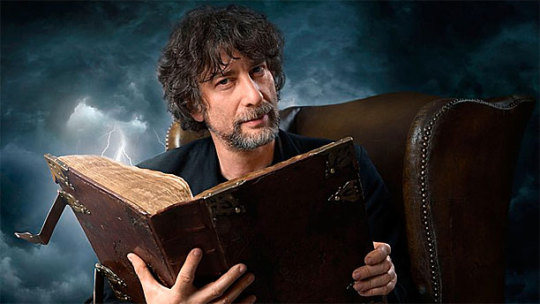
2 books to talk about this month, and both of them are from writers linked to my one true passion, comics. First up is Norse Mythology (2017) by Neil Gaiman, which as the title would suggest, is a re-telling of the Norse myths from Gaiman. It’s pretty cool to read his take on the direct myths, as these characters have popped up throughout his work. Whether in Sandman or American Gods, Gaiman has put his stamp on the likes of Odin and Loki, and it’s interesting to see him interpret the original stories. Like Gaiman, I first encountered the Norse Gods in the pages of Marvel Comics, and whilst these versions are therefore familiar, there’s something different about them, something darker for sure. This felt like a faithful, albeit poetic adaptation of the stories, as most of them were ones I knew, whether from the comics (if you’ve never read Matt Fraction and Patrick Zircher’s series of Thor one-shots that re-tell the myths you need to rectify that) or from previous takes on the myths or even just cultural osmosis. All of the familiar Gods appear, and you get stories like when Thor dressed as a woman to kill a Frost Giant, or the old beggar who built Asgard in a year. One thing I liked is that Gaiman really gets across how these stories are part of an oral tradition, and not all of them survive, so you get intentional continuity errors and characters just disappearing. It’s clear that there were other myths back then, but not all of them have survived to today. The short chapter length means that this book would probably actually be perfect for reading aloud, and I may even listen to the audiobook if Gaiman is reading it himself. He has a fantastic voice for audiobooks, it’s how I read The Graveyard Book for the first time. One other advantage this re-telling has over the comics is that Gaiman is able to actually reach ‘Ragnarok’, the death of the Gods, and go through with it. In the Marvel Universe, even though Ragnarok has happened (a couple of times in fact) and Thor has died or been replaced even more, you still know that nothing will change, but not in this case. All of the Gods, particularly Balder and Loki, meet their eventual tragic ends. This is a very enjoyable read, especially for someone who, like me, has an interest in myths and legends. It’s clear that Gaiman has a lot of affection for these Gods (particularly Loki, who is wonderfully complex here) and stories, and he more than does them justice. I would certainly be interesting in seeing Gaiman tackle other Pantheons, I personally like Greek Myth the best, but would like to know more about Egyptian as well.
I’m currently just under half-way through Michael Chabon’s Moonglow (2016) and am very much enjoying it. This novel is styled as a memoir and sees Chabon detail the life of his grandparents, particularly his grandfather. Jumping back and forth throughout his life, Chabon allows us to see what his grandfather was like as a child, as a soldier in WW2, as a newlywed, and and as an old man. So far it’s a fascinating book, both in terms of how Chabon details the complex characters of both grandparents, and also in how he tackles the hazy nature of memory and truth. It’s never clear just how much of the book is actually true, the characters are never actually named (it’s just ‘my grandfather’ or ‘my mother’) so it could all be 100% fiction. I tend to lean into it mostly being true, but in the end, it doesn’t really matter does it? As is usual with Chabon, the writing here is very strong, with some very beautiful sentences and moments. The fact that we know that the central characters here die at the very outset makes everything, particularly the romance, bittersweet, and Chabon nails that. It’s interesting, but the book I keep comparing this to is Pynchon’s Gravity’s Rainbow. Both books are about V2 rockets in WW2, but one is a weird, sprawling epic, whereas the other is an intimate character piece. It just shows how different writers can approach the same topic in completely differing ways. I don’t think Moonglow is quite as good as Kavalier and Clay, but what is? It’s still a very good book and I am excited to read the rest of it.
Games
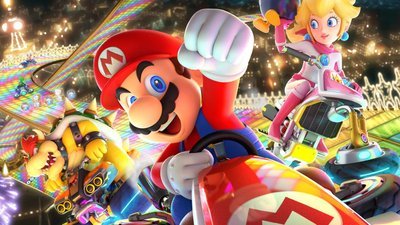
After going months, nay, years, with no games section, I now have 2 games to write about! You wait for a bus…
Anyway, along with Zelda, I’ve now also bought Mario Kart 8 Deluxe (Nintendo Switch 2017) and whilst I haven’t played it a whole lot, is a whole lot of fun, because, well, it’s Mario Kart! Those games are always fun, the more things change, the more things stay the same. They may have added a boat-load of new characters (including Link, which is weird) and added a bunch of bells and whistles and para-gliders onto the Karts, but it’s basically the same game I’ve been playing since the N64, a mad-cap race on some insane courses. I haven’t played every track yet, but I’m getting there. One thing I really appreciate about this particular version is that you can use a single Switch Joycon as a controller, so I didn’t need to shell (heh) out £60 for another controller in order to play multiplayer. I’ve always enjoyed playing against someone else who’s actually in the room over online, so that’s a huge plus, not just for Mario Kart but for the Switch in general if future games follow suit. Mario Kart is hard to really talk about critically because it’s so pure at what it is, but I do love it. And who do I play as you ask? Yoshi of course, always Yoshi. Although sometimes Toad.
As for The Legend Of Zelda: Breath Of The Wild (Nintendo Switch 2017) I’ve spent most of my recent time trying in vain to capture and train horses. I’ve really been embracing the freedom the game provides to do things in whatever order I want. I haven’t even gone to Kakariko Village yet! I’m probably a bad player, but I don’t mind, I’m having a lot of fun and the game is still as beautiful and clever as ever. There’s a real romance to this game, I find it an emotional and exhilarating experience to play.
—
So that’s your lot, hope you enjoyed it. I’ll be back in about a month with some more. It’s summer, so expect there to be a lot less TV and maybe just a whole lot less of everything if this weather keeps up! Although you can take Switches outside…
#The Ides Of#June#2017#Movies#Prometheus#Doctor Strange#Jodorowsky's Dune#X-Men: Apocalypse#The Witch#The Babadook#Rogue One: A Star Wars Story#Television#Brooklyn Nine-Nine#Better Call Saul#Archer#Gotham#The Flash#iZombie#Marvel's Agents Of SHIELD#American Gods#The Americans#Veep#Silicon Valley#Unbreakable Kimmy Schmidt#Books#Neil Gaiman#Michael Chabon#Games#Mario Kart 8 Deluxe#The Legend Of Zelda: Breath Of The Wild
0 notes
Text
ESSAY
Analyse how and why the photographers Vivian Maier, Bob Mazzer and David Carol have explored themes to do with narrative and the everyday in their practice.
‘Narrative’ photography is a style of photography that can be used to tell a story. It uses the power of visual image to create emotion and evoke thought. In photography, the word narrative is related to the idea of context. The narrative is always the product of selection. Usually the best parts of the narrative are included to produce better, more selected work. As the photographer Stuart Freedman stated, ‘we need a return to a storytelling in photography as rigorous in thought and research as it is beautiful in construction and execution.’ (1) The idea of a narrative has existed for hundreds of years. Some of the earliest evidence of human art suggests that people told stories with pictures. The image below is the Bayeux tapestry (2), and it tells the story of when the Normans invaded Britain in 1066. The image depicts the scenes of an important historical event, and without the tapestry, future generations may not have known so much about the event. Narrative in the context of photography is just as important as it shows the story of a certain time, location, or person.
It could be argued that in the past, the genre of narrative photography was addressed in a very naïve way. Vivian Maier often worked in this way. Maier (February 1, 1926 – April 21, 2009) was a photographer who worked for most of her life as a nanny, and used her spare time to discover photography. She was self-taught, and mainly photographed in the areas where she was looking after children, but she had also travelled and photographed around the world. She took more than 150,000 photographs in her life, mainly of people and architecture of New York City, Chicago (where she was a nanny) and other places around the globe. (3) Without realising it, Maier captured the ‘narrative’ of a busy city through taking candid, yet well-composed photographs. Maier’s inspiration for her photography would come from her daily journeys. As she worked as a nanny in various different places the inspiration would come from surrounding areas, however she did travel to some places in the world such as Canada, where the picture above was taken. Maier gave an insider’s view into what urban surroundings looked like in the 19th century, photographing various events, buildings, people, and anything that caught her attention. Therefore, Maier’s extensive collection of images are important in seeing urban life in a different light. This is evident in one of her pictures that is simply entitled ‘1954, New York, NY’. The picture (4) shows a young black boy and a young white boy at a shoe shine station totally unaware of Maier’s camera. This image is symbolic of oppression around the time that this was taken, as racial profiling was at its prime around the 1950s. Bob Mazzer worked as a projectionist in a porn cinema called The Office Cinema. He commuted on the tube late at night and on his way from King's Cross to Manor House, he habitually snapped characters he met on his way, capturing the hijinks of London’s late night revelers as they made their way home. (5) Mazzer’s approach to ‘narrative’ based photography was very much from the opposite direction. Mazzer would travel on the London Underground throughout the 1960s, 70s and 80s onward, capturing and recording the ever changing London ‘scene’ of the time. It can be argued that the narrative element in his work is much more obvious than that of Maier’s, but unlike Maier, he tried to just blend in with his surroundings. “I kept my eyes peeled! As soon as I went through the entrance of the Tube I set my camera to F4, 1/60th of a second, an old film camera, and that could deal with most situations, so I would be ready, often with my camera just round my chest. It was a little black Leica, it was very unobtrusive, an unthreatening little thing… You didn’t want a shiny thing that said ‘I’m a photographer!’ You wanted it to disappear.” (6)
Bob Mazzer explored the concept of capturing a sense of ‘narrative’ within the London underground network. He would travel on the London underground and discretely capture pictures that he thought told a story of the London underground. Mazzer’s inspiration for his collection of photos comes from his daily commute; he worked as a projectionist in Kings Cross, and would often travel back from his work late, and he was intrigued by his surroundings, prompting him to photograph them. Mazzer gave an insider’s view into what London looked like in the 70s and 80s, capturing the various subcultures seen in the capital and a small fraction of the human diversity and strangeness he encountered on the underground. It is fair to say that Mazzer’s photos could be considered to be important social documents that can be used to look back on, whilst serving an important historic purpose as they show the changes in London throughout the mid to late 20th Century. Mazzer also used his photographs to show the characters within society that would usually have been ignored. It can be argued that the tube is an antisocial mode of transport, with strangers being thrown together in a very confined space, so very few people really draw attention to themselves. By photographing the underground and the people who use it, Mazzer portrayed what many could consider to be a dull, monotonous part of London life to be an intriguing environment, teeming with life and interest. The work of Mazzer is very intimate. It focuses on specific people and allows the camera to tell their story. This is clearly evident. In ‘7’(un-named) above (7), two men share a passionate moment amongst a crowded and seemingly oblivious carriage. This is a typical narrative picture as it is symbolic of society’s progression as the two men are openly embracing on the train. However even though society had progressed on a level of acceptation of gay people, the fact that they are pictured alone on the train represents the people being isolated from society as It could be argued that the photograph itself is very much in the ‘fine art’ genre in the way that it is a traditional, black & white image where a conventional composition is used.
Mazzer’s work is of a social context as it narrates London life, noting the changes through the mid to late 20th century. It also explores the numerous different subcultures, movements and statements that people of the 70s, 80s and 90s had made. A good example of this is in the picture below, where three punks are seen showing off their tattoos to Mazzer and his camera. The photograph wasn’t planned and heavily relies on the subject to do their ‘own thing’ and through people’s different backgrounds, beliefs and subcultures, Mazzer manages to capture what he sees London as; diverse.
“I love relating to people, and it’s a kind of hippy ideology, but we’re all in this together. I may know nothing about you but we’re both human beings here, and we’re going through the same sort of problems in one way or another, so there can be an instant camaraderie.”- Bob Mazzer 2014 (8) Born august 23rd 1958, David J Carol is an American photographer (born August 23, 1958) is the co-founder and editor-in-chief of Peanut Press Books and author of a number of photography books. Carol has published a vast majority of his photographs in to his own books. He creates his work from a social context, however in comparison to Bob Mazzer; he uses the theme of ‘absurdity’ to communicate a narrative to his viewers. A prime example of this, as stated by Carol himself, is featured in the image below. “That image wraps up everything that I do. Here you are in the desert, and what is this dirty mattress doing there?” (9) The concept behind this particular picture is absurd as there is just a solitary mattress laying in the middle of the desert, and the object had been taken out of its natural environment.
Carol’s work is often placed in the ‘fine art photography’ genre category, however his unorthodox ideas and processes contradicts this. His work is an embodiment of himself as a person, and it points out the absurdness of a particular place. He points out these absurdities and uses them to tell stories about the different places he finds himself in.
Carol is an award winning photographer and many of his photographs are displayed are displayed in galleries. However, with his earlier work, Carol had said that he was frustrated with how his photographs looked, suggesting that they may have displayed too many similarities. He hadn’t truly embraced his own style until being inspired to do so. After a conversation with Anne Wilkes Tucker (a photography curator), Carol realised that the work he had been initially frustrated with was actually his own style coming through. Carol uses striking and contrasting subject matter to construct a narrative within his work. Taken from his book ‘Plan B’, ‘gorilla’ is a piece from a collection of photographs taken from various road trips he has been on since the 1990s. It could be argued that Carol has used ‘forced perspective’ to portray the notion of humor by making the house look particularly small in relation to the gorilla, which in fact looks particularly large. The gorilla looks out of place in the middle of the road because it would not normally be located there. I emailed the photographer to see whether he found or placed the plush item there and he simply said: ‘yep, there it was!’.
I have looked at three different photographers in this essay, and from them, Vivian Maier and Bob Mazzer were producing narrative based work before I was born. However, I do not feel like this would make the photographs less relatable. The photographs that were taken in the 1950s, 60s and 70s were all significant in acting as archives for the future generations to look at. The photographs that I have looked are important because of their social and historical connotations. Photographs act like articles that show important stages or progressions in history. This is shown in Bob Mazzer’s un named piece, where two men are kissing on the train. The men were kissing in an open space, and this would probably have been quite unheard of as people were only just starting to accept homosexual people.
1: https://www.david-campbell.org/2010/11/18/photography-and-narrative/ 2: https://en.wikipedia.org/wiki/Bayeux_Tapestry 3: https://en.wikipedia.org/wiki/Vivian_Maier 4: http://www.vivianmaier.com/ 5: https://www.vice.com/en_uk/article/bob-mazzers-photos-immortalised-Londons-underground 6: http://www.itsnicethat.com/articles/bob-mazzer 7: http://howardgriffingallery.com/exhibitions/bob-mazzer-underground 8): http://www.itsnicethat.com/articles/bob-mazzer 9): http://www.rangefinderonline.com/articles/this-is-why-we-cant-have-nice-things-2/ 10:
0 notes